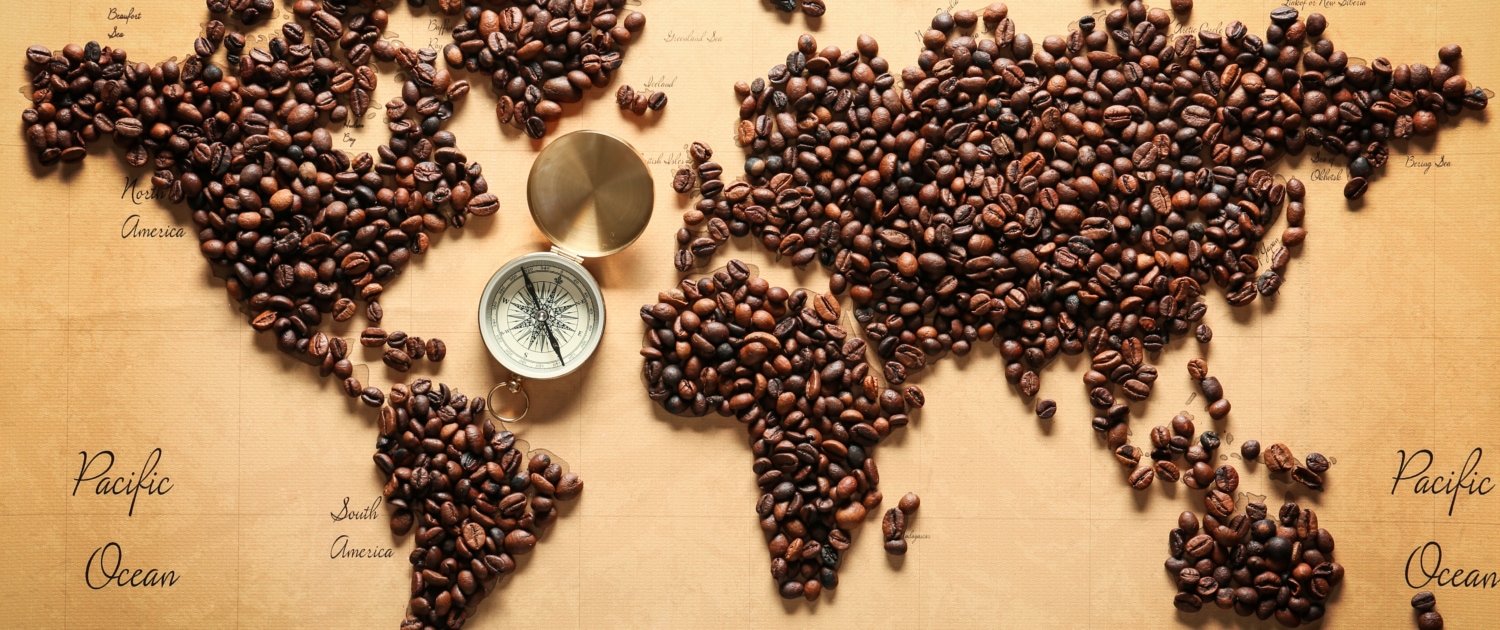History of Coffee
– Where it Comes From and How it Conquered the World –
We all love coffee.
Nowadays, the empowering dark liquid is one of the most popular beverages in the world.
Our vast and colorful coffee universe offers us endless drink versions to choose from and enjoy.
Coffee not only tastes delicious in all of its great varieties. The beverage also comes with a lot of great health benefits. Many coffee lovers even say that it makes us happier and live longer.
In addition, one of the coffee’s most famous and widely used ingredients is caffeine.
The popular stimulant provides us with a much appreciated energy boost. And, it therefore helps us to get through our daily lives more efficiently.
But, how did these little brown coffee beans eventually become such an essential part in our communities and cultures all around the world?
What do we actually know about the history of coffee?
Where does it come from? And, how did it eventually conquer the world?
To me, the history of coffee is a very fascinating one.
The bean literally travelled our globe for centuries already. People smuggled it out of strict countries, stole beans from royal families. And, coffee even changed entire nations and economies.
Quite a remarkable story for a small bean taken from tiny trees in Ethiopia once. Today, coffee is a true global powerhouse and became the 2nd largest commodity traded worldwide.
This article shares everything you need to know about the history of coffee.
Let our journey begin.
The Beginning of Everything
So, where is the coffee bean originally coming from?
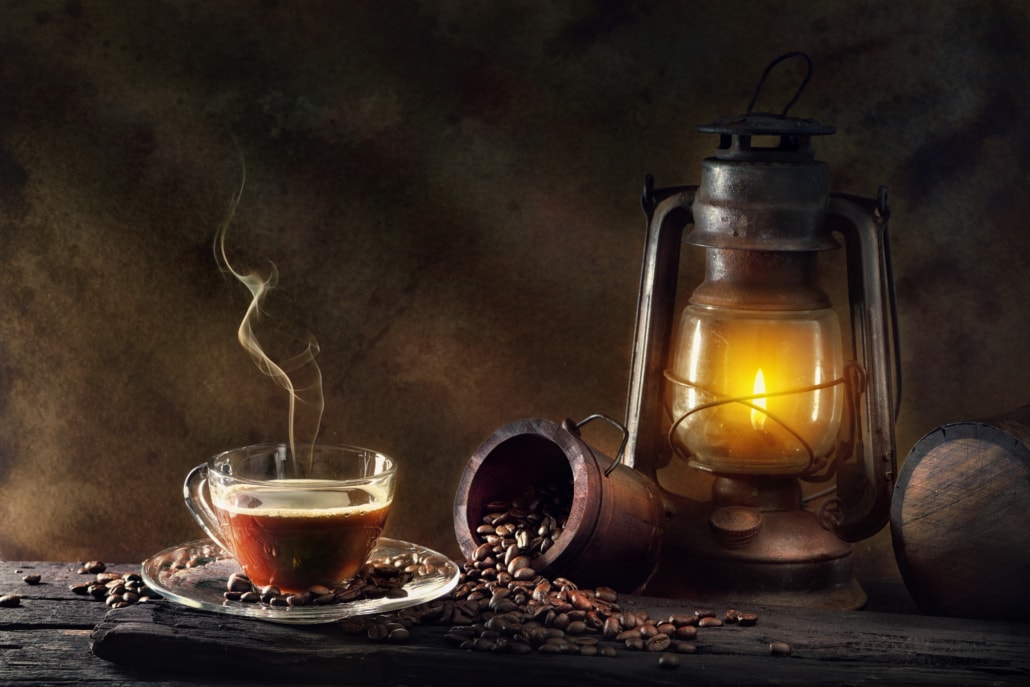
This answer seems rather easy. Most historians agree that it came from Ethiopia in the very beginning.
Historians often label the north eastern African nation as the ‘birthplace of coffee’.
Hence, this is where our history of coffee begins. And, from where the coffee bean eventually made it to every corner of the planet.
After a rather slow discovery and start in Africa, coffee finally went west into Europe. Here, Europe’s newer civilizations discovered the dark brew and greatly desired it as well.
At the same time, the beans also travelled into Arabia and Asia, where it was mostly planted and harvested, first.
As you can see, there is a lot to unwrap for us.
So, just get a cup of coffee and let us continue.
Ethiopia and its Dancing Goats
How did people discover coffee for the first time?
Well, the most popular origin story sounds a bit strange at first. But, I read the more or less same story over and over again.
The story begins with Kaldi and his goats in 700 A.D..
Back then, Ethiopia was still part of the former nation, Abyssinia.
Kaldi was a goat herder in the Ethiopian mountains. One day, he noticed his goats acting quite strange. They were literally dancing. This definitely wasn’t normal.
What happened?
After some time, Kaldi discovered that his goats were eating little red berries from small trees hidden away.
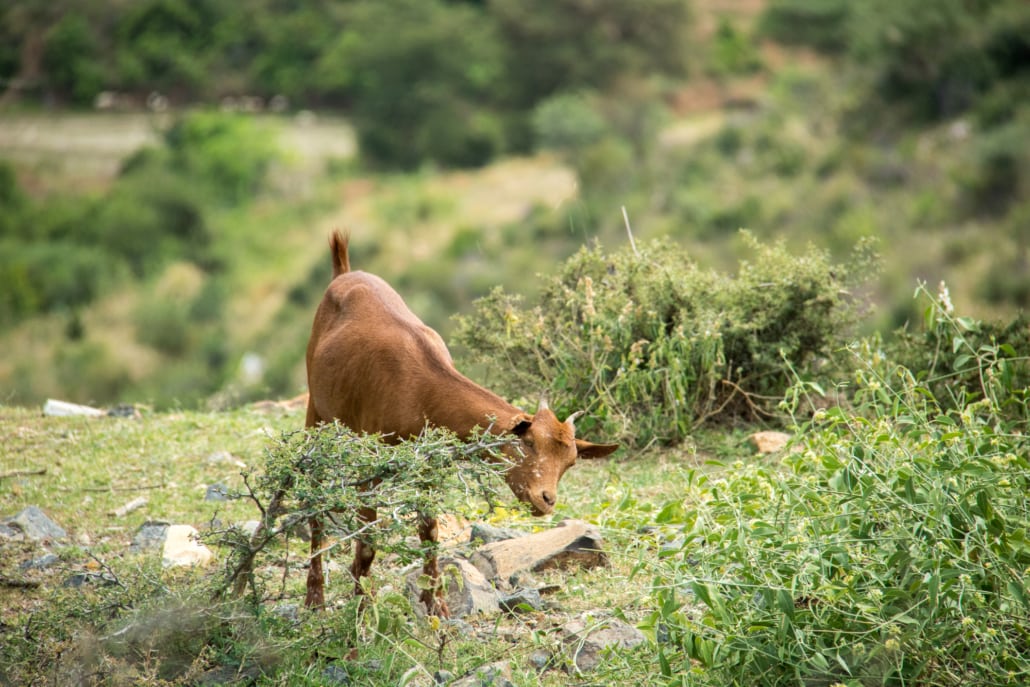
He assumed that these fruits must be the reason for the peculiar behavior of his goats. Kaldi collected a few of these berries. And, he then shared this magic fruit with a nearby monk.
Furthermore, the monk was equally ecstatic about these findings and their potency like the goats. Indeed, the little red fruits helped him to stay awake all night as he prayed.
However, there is also a slightly different origin story out there as well.
In this one, Kaldi gave the beans to a monk, too. But, this time, the monk disapproved of their use at first. He simply didn’t know how to use them or what to use them for.
So, he threw them into the fire.
And, this is when the real magic happened. The burned coffee fruit produced a wonderful, pleasing aroma. Essentially, one could say that this was the world’s first roasted coffee.
Shortly after, word spread quickly amongst monks at first. Soon, they established ways of properly grinding and boiling the beans.
So, they eventually produced the first beverages what we know as coffee today.
Across the Waters – History of Coffee
You can probably imagine. We cannot entirely prove the story of Kaldi and his dancing goats.
However, when it comes to our history of coffee and its origin. One thing is universally certain and most historians agree on it. The first coffee came from Ethiopia.
What we are also sure about is where coffee went next.
In specific, our coffee beans travelled far north. They went across the Red Sea into Yemen in the 15th century.
Coffee first arrived at the first sea port of Mocha.
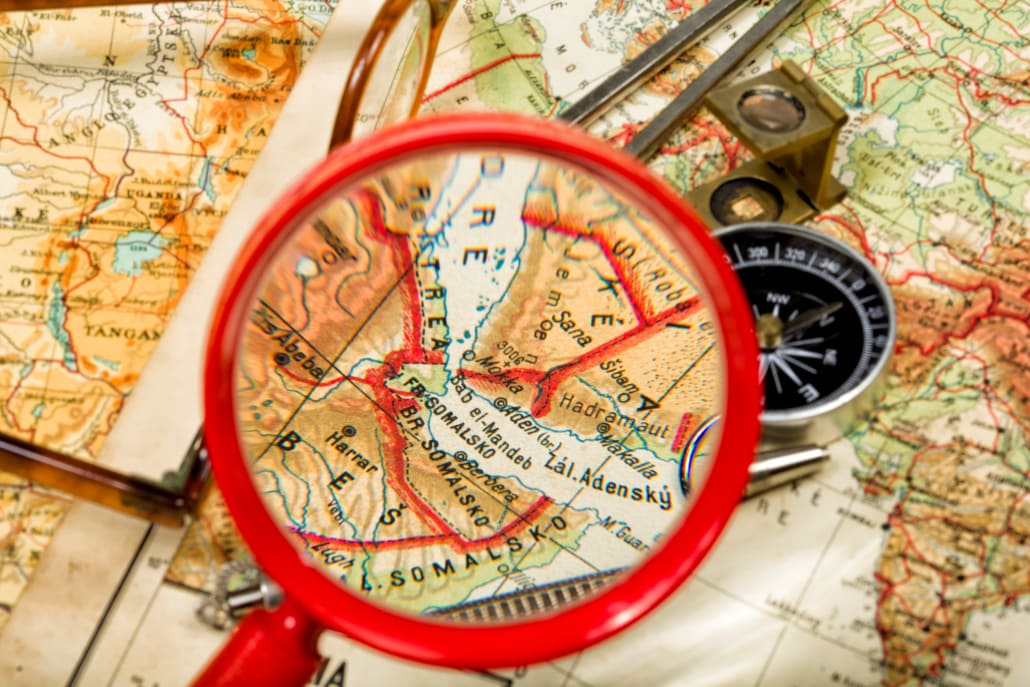
From here, the popularity of coffee grew drastically. More and more coffee shipments from Mocha left for other cities. That is why Mocha became synonymous with coffee.
So, whenever you hear the term ‘mocha’ when talking about coffee. Now, you know where the original name actually comes from.
All Across Arabia
Soon after its arrival in Yemen, farmers grew coffee economically in the mountainous regions. Due to the increased trading routes, the beverage became especially well-known in Persia, Egypt and Turkey.
People called it the ‘Wine of Araby’.
Over time, coffee grew more and more in popularity. Hence, first few coffee houses opened up all around the Arabian regions.
These original coffee houses also carried the common name of ‘Schools of the Wise’.
Many people liked to go there. Here, they shared and heard the latest news and information. In fact, it didn’t take long until these coffee houses became the new epicenter of social gathering and activity.
However, the majority of the ruling elites in Arabia saw a danger in these developments.
In the early 1500’s, the court of Mecca officially declared coffee to be forbidden. This was due its stimulating effects.
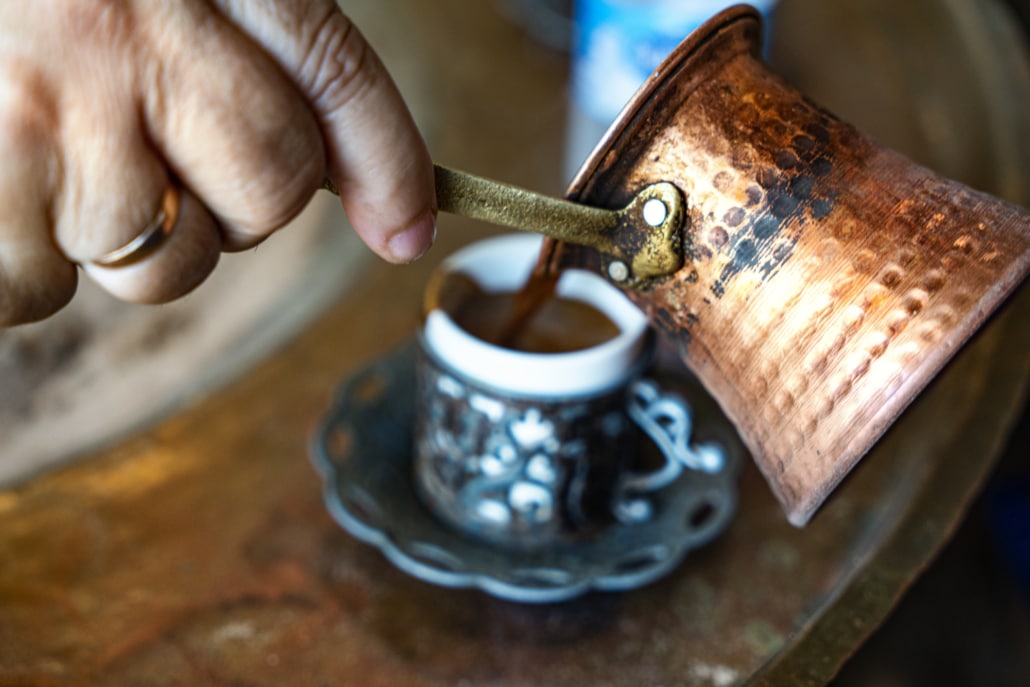
Similar events and decisions took place in Egypt and Ethiopia.
But, the popularity and appreciation of coffee hardly stopped with these measurements. Eventually, officials lifted the bans again.
Sadly, this didn’t happen before coffee faced its fair share of persecution.
It wasn’t uncommon to see coffee houses shutting down by force. Authorities also publically humiliated and punished coffee enthusiasts in various ways.
As a result, public riots and protests broke our all across Arabia broke out. Authorities had to take notice and they finally reestablished coffee as a commonly allowed beverage.
Lastly, justice returned to the coffee loving and drinking people.
From here, our history of coffee and its development accelerated even faster.
Coffee Enters Europe and Asia
When the coffee beans left the Arabian regions and conquered new areas, the course of the history of coffee changed.
Now, the beans simultaneously spread both east and west. East into India and Indonesia. And, West into Italy at first, and shortly after onto the rest of Europe.
Asia’s Role in the History of Coffee
In the early days, the region of Arabia was basically the gatekeeper for coffee.
If you wanted to have any coffee beans, you had to purchase them from Yemen. The nation literally had the monopoly on coffee.
Especially its authorities were very pleased with the way it was. It meant great income for them and the country of Yemen.
Hence, they did everything to ensure that nobody else could somehow take fertile coffee beans out of their control. So, they can possibly plant them somewhere else and outside of their realm.
For quite a long time, this strategy worked very well.
This is until Baba Budan came along. He was a Sufi saint from India, who was on a pilgrimage to Mecca in 1670.
The story goes, that he discovered for himself the wonders of coffee during his visit.
Baba Budan was fascinated by their potential. Therefore, he was eager to grow coffee himself at home.
So, it is told that he smuggled seven coffee beans out of the Yemeni port of Mocha. In fact, he was hiding them in his beard.
Upon his arrival in India, he began the first coffee cultivation outside of Arabia. It was the beginning of a large scale coffee farming in today’s southern western state of India of Karnataka.
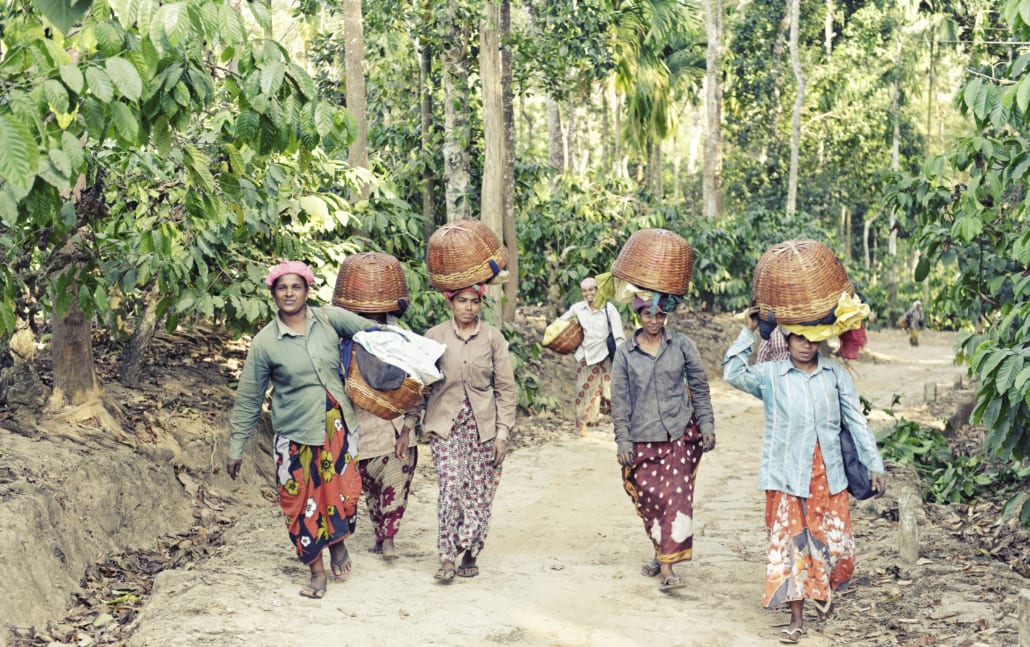
The region is still producing coffee to this day. Furthermore, in appreciation of the saint and his achievements, the area carries the name of Baba Budan Hills.
Going Further East
In the late 1600’s, the first Europeans also finally became an active part in the history of coffee.
Their first attempt failed miserably.
Some Dutchmen also successfully managed to smuggle come coffee plants from Yemen. They wanted to grow the beans in Holland.
However, they soon had to realize that their cold weather was not suitable for their cultivation plans at all.
Luckily, the second attempt was a success after all.
Friends and trade partners from Ceylon, now known as Sri Lanka, were sending some seedling to the Dutch governor of Java in Indonesia.
Multiple times, farmers had start all over again, due to natural disasters wiping out their first attempts at coffee cultivation.
Eventually and in 1704, more seedlings were planted in Java. And, soon after, coffee from Indonesia became a staple and was shipped abroad.
Today, the term ‘Java’ is another household name for coffee.
In addition, the coffee plants also made it quickly from Java to the neighboring islands of Sumatra and Celebes. This drastically increased the country’s coffee growing capacity.
To this day, Indonesia is one of the world’s top coffee producers.
Heading West – The European History of Coffee
It was in 1570 that coffee had also finally arrived in Venice. The Italian port town was one of the major trade places and entry points into Europe.
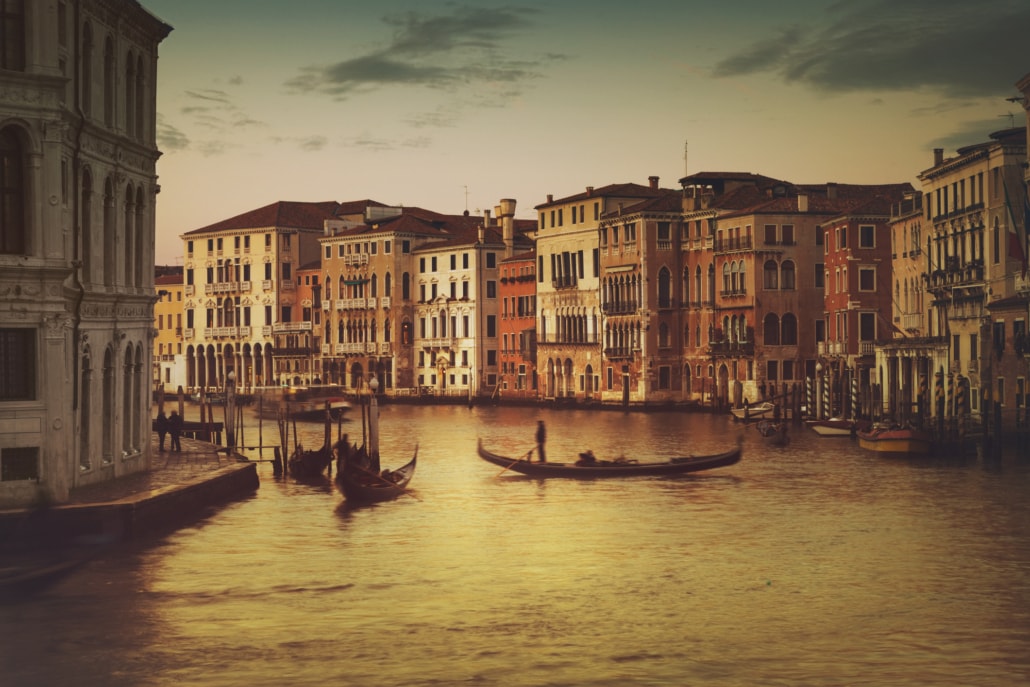
From there, the empowering beverage quickly became popular all across the continent.
Furthermore, some people were kind of overwhelmed how quickly coffee established itself in European societies.
Hence, in 1615, Pope Clement VIII knew no better and decided that the strange, empowering liquid must be satanic.
However, when he had the chance to try and inspect it himself. He quickly changed his mind and gave in to the glory of coffee.
As a result, the pope officially baptized coffee and declared it to be a Christian drink.
During the next decades of the 16th century, coffee houses popped up all over Europe. Especially in England, Germany, Austria, Holland and France.
Soon after, the same phenomena took place as did in the Arabian regions before already.
Quickly, these new European coffee houses became social gather points. People could engage in stimulating conversations and even political debates.
These social establishments even received special names to express their purposes. For example, in England these coffee houses became known as penny universities.
The Coffee Club
At these so-called penny universities, any guest could learn about all sorts of things as public conversations took place. And, all of this just for the price of a cup of coffee.
Furthermore, many of these first and original places even grew into actual business establishments.
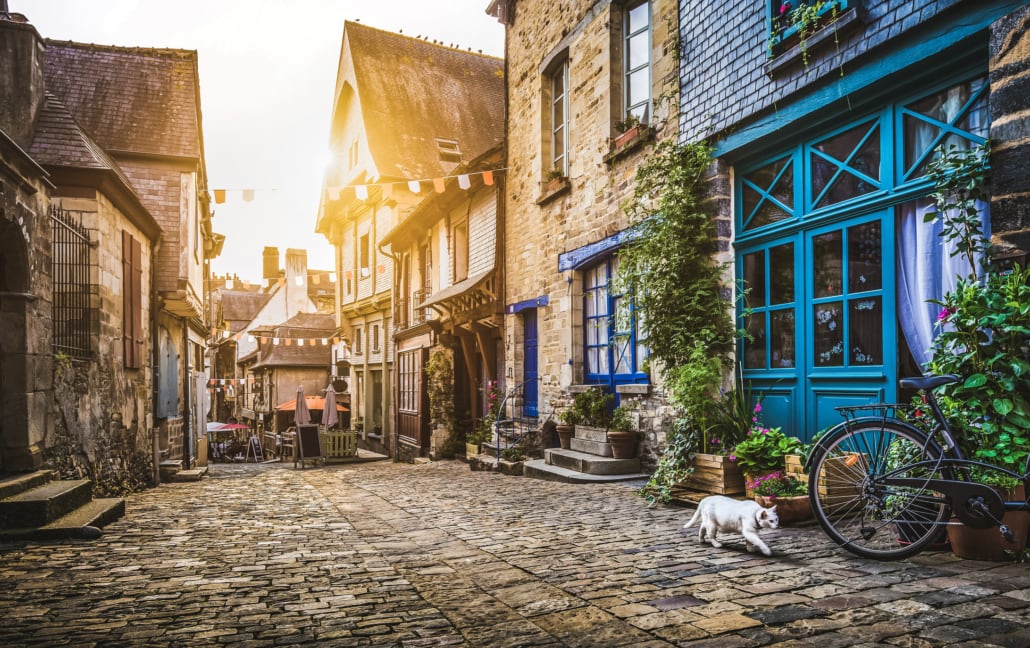
Probably, the most famous example is the Edward Lloyd’s Coffee House. Over time, it actually became a large scale insurance company.
Around the same time, England’s first official coffee club opened in Oxford.
Later, the shop would be better known under the name of Oxford Coffee Club. Eventually, it would continue growing into The Royal Society.
Quite naturally, coffee houses became the go-to places for English men.
If they would not be working and not be at the pub. They would certainly gather at some of the coffee houses.
As you can maybe imagine, not every wife was happy about it.
In fact, many women were furious, because their husbands were literally never home anymore. Many men would always be drinking coffee and engage in religious or political conversations.
But the wife’s anger didn’t just go away quietly.
In 1674, the Women’s Petition Against Coffee was born. They have simply had enough. This was a desperate attempt to ban coffee. And hopefully bring their husbands back home.
Did it work? I think, you can answer this yourself.
The Coffee’s Quest Continues
Moreover, coffee was introduced in France around the mid-17th century. To be exact, it officially happened through the Turkish Ambassador in Paris in 1669.
It didn’t take long to entirely convince the reigning king, Louis XIV and his Royal Court. Soon after, all of Paris was overtaken by the energizing beverage.
Additionally, and after the Battle of Vienna, Austria’s first coffee house opened in 1683. The name was The Blue Bottle.
After the war, the Turks, who were attempting to invade the nation, were defeated. Unwillingly though, when retreating its troops had to leave vast amounts of coffee behind.
A victorious Austrian officer confiscated these precious beans quickly.
He then shortly after opened The Blue Bottle. It was here, where it was firstly successfully popularized to add milk and sugar to your coffee as well.
Coffee and the Americas
At last, there was still one continent left to be conquered by coffee.
The Americas were the ‘final coffee’s frontier’.
Before, these little beans already took Africa and the Indian Ocean nations, including Australia, by storm.
Furthermore, the coffee phenomenon was literally sweeping over all of Europe in just a few decades.
Now, it was about time to even further head west. So, to eventually conquer every nation touching the Atlantic Ocean.
Across the ‘Big Pond’
We should probably all thank the Dutch again.
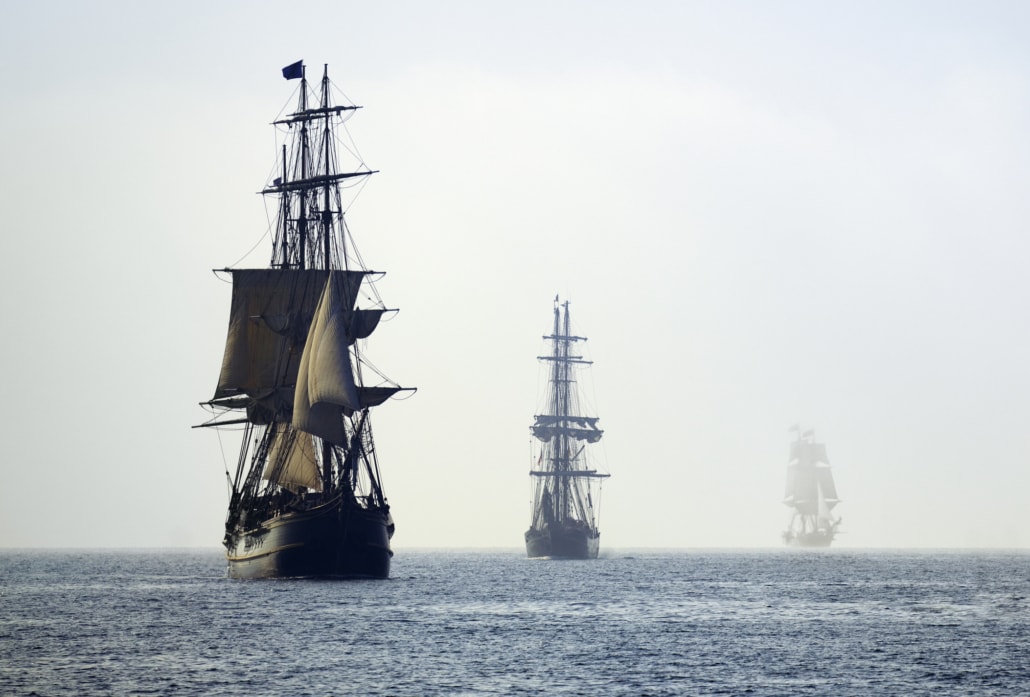
It was in the early 18th century, when they decided to extend their generosity a bit further even. In fact, this would change the world of coffee farming forever.
As a gift, the Mayor of Amsterdam gave a young coffee plant to King Louis XIV in 1714.
Despite the Dutch not being able cultivating coffee trees in cold Holland. They at least found ways how to successfully keep them alive in special greenhouses.
The French king graciously accepted this very generous gift. And, the plant was being protected in the Royal Botanical Gardens of Paris.
Furthermore, the French Navy captain, Gabriel Mathieu de Clieu, was actually stationed in Martinique. However, he just happened to be visiting Paris during that time.
Historians are uncertain, if the captain either stole small plant pieces from King Louis’ coffee tree. Or, if the king actually gave the order for the captain establishing a coffee plantation in Martinique.
One way or the other, Captain Clieu was in possession of some clippings. Next, he was setting sail for the Caribbean.
As it turned out, the Caribbean happened to offer the ideal coffee growing conditions.
However, going across the ‘Big Pond’ or Atlantic Ocean wasn’t an easy task for the captain. On the way, he struggled to keep his little coffee plant alive.
During the long journey, fresh water was precious. Nonetheless, Captain Clieu eventually managed to keep the plant alive.
Often times, he even went thirsty himself. So, he could give his own water supply to his beloved plant instead.
The New World – History of Coffee
After many weeks, the ship finally reached its island destination in the Caribbean Sea.
Upon arrival, Clieu secretly planted the coffee tree among other plants. To keep it hidden and safe.
It just took three years. And, coffee plantations popped up all over Martinique, St. Dominique and Guadalupe.
These first plants would eventually also help populating the rest of the Caribbean, Central and South America.
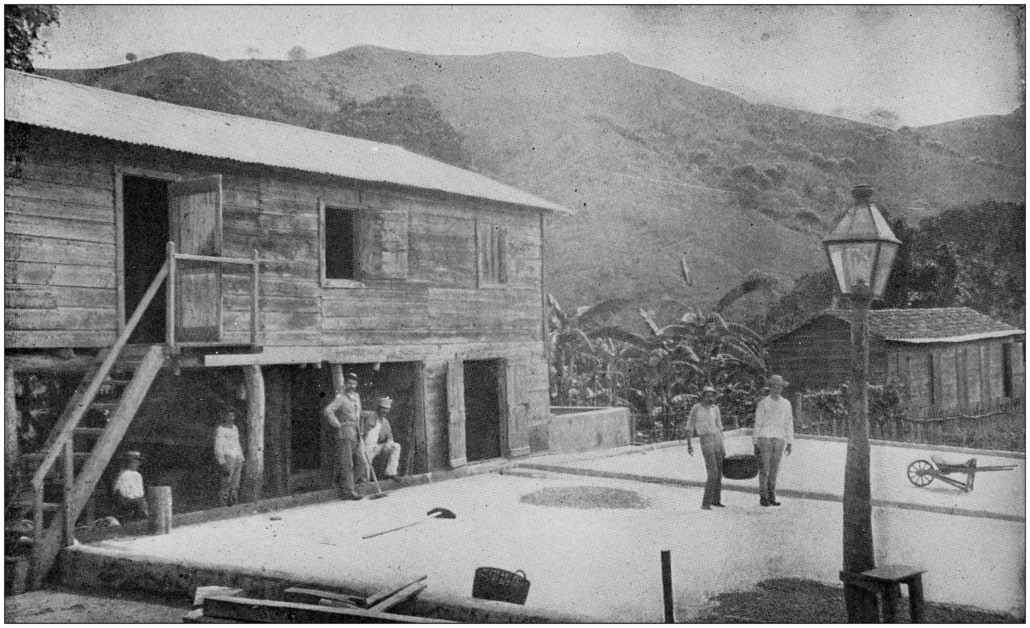
Literally, a whole new world opened up for coffee. Our history of coffee took its next big turn.
Additionally, the English Governor of Jamaica, Sir Nicholas Lawes, brought the first coffee plants to his island in 1730.
Just a few years later, coffee plants were even growing all the way deep into the Blue Mountains. These days, Blue Mountain Coffee is one of the most exceptional coffee varieties.
A New Coffee Empire is Born
Today, Brazil is growing more coffee than any other country in the world. The South American nation is the global top producer by far.
But, how did we get there? How did it start?
Well, it all started with a Brazilian colonel by the name of Francisco de Melo Palheta.
Initially, the colonel was sent to Guyana. He was supposed to settle a local dispute between the Dutch and the French there in 1727.
However, his own priority or secret mission was something else. His goal was to get coffee and successfully smuggle it back to Brazil. Whatever the cost may be.
First, Francisco tried it the official way. But, when the Brazilian colonel kindly requested coffee seedlings from the French governor, his demand was refused.
Hence, he decided to use a seductive back up plan instead.
This one involved the French governor’s wife. Francisco worked his magic on her. And eventually, she was able to secretly organize a handful of coffee clippings for Francisco.
After, the colonel didn’t wait much longer but immediately made his way back to Brazil. Overall, one could rightfully say that Francisco started the largest coffee empire on the planet.
However, it almost took another 100 years until the coffee production really started to boom in Brazil. This was roughly around 1822.
But just a few decades later, namely by 1852, the country already became the largest coffee producing nation worldwide. And, it has successfully remained on top until today.
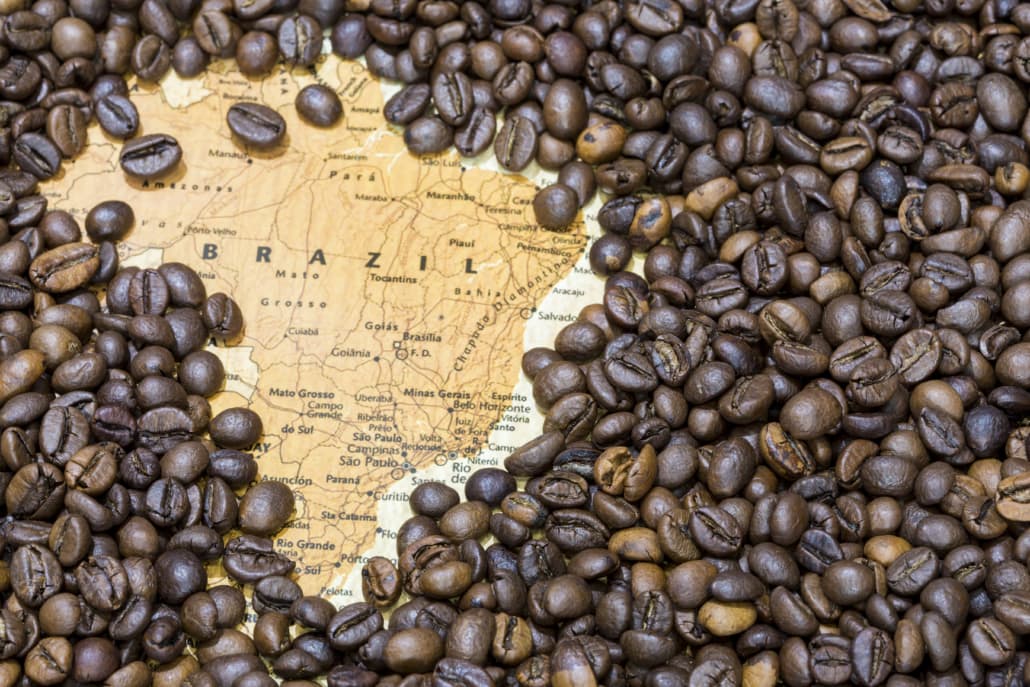
Furthermore, Brazilian coffee was also taken to Kenya and Tanzania in 1893 and cultivated all over East Africa. This is actually close to the original birthplace of coffee.
Once could say that our history of coffee had made its mark all over the world by then.
But, the story is far from over.
How America Changed Everything
Coffee had been around in North America for some time already.
However, America’s history of coffee really started in the 18th century. It all began with the Boston Tea Party and the American Revolution following in 1773.
What happened?
A group of US American patriots deliberately dressed as native Indians. They then snuck aboard English tea ships sitting in the Boston harbor.
Furthermore, they dumped all of the tea into the sea. This was to show resistance and rebellion against the high English tax demands tea in its American colonies at the time.
The result of this incident was that tea became extremely unpatriotic and unpopular. People were looking for a good alternative instead.
Thus, for many Americans, coffee became the new favorite beverage of choice.
Since then, America has always been the leading importer of coffee. Even today, the nation continues to buy far more coffee than any other country.
Due to the big and steady coffee demand on the American market, it turned out to be a crucial economic stimulus to many countries throughout South and Central America.
But America not only imports coffee these days. It actually also grows a little bit of coffee itself.
The today’s most prominent region is probably Hawaii. However, the Pacific islands didn’t become part of America until 1959.
Nonetheless, coffee was first introduced to Hawaiian farmers many decades earlier already.
In fact, the first coffee seedlings were brought over from Brazil in 1817. Just a few years later, in 1825, Hawaii’s first official coffee orchard was born.
This started the today’s widely famous and popular Kona’s legacy in the coffee industry.
Our Today’s Coffee Industry – History of Coffee
As you can see, eventually our little coffee beans reached every corner of our planet. By the 19th century, coffee was a global phenomenon and part of every community.
Coffee beans were being shipped and consumed everywhere.
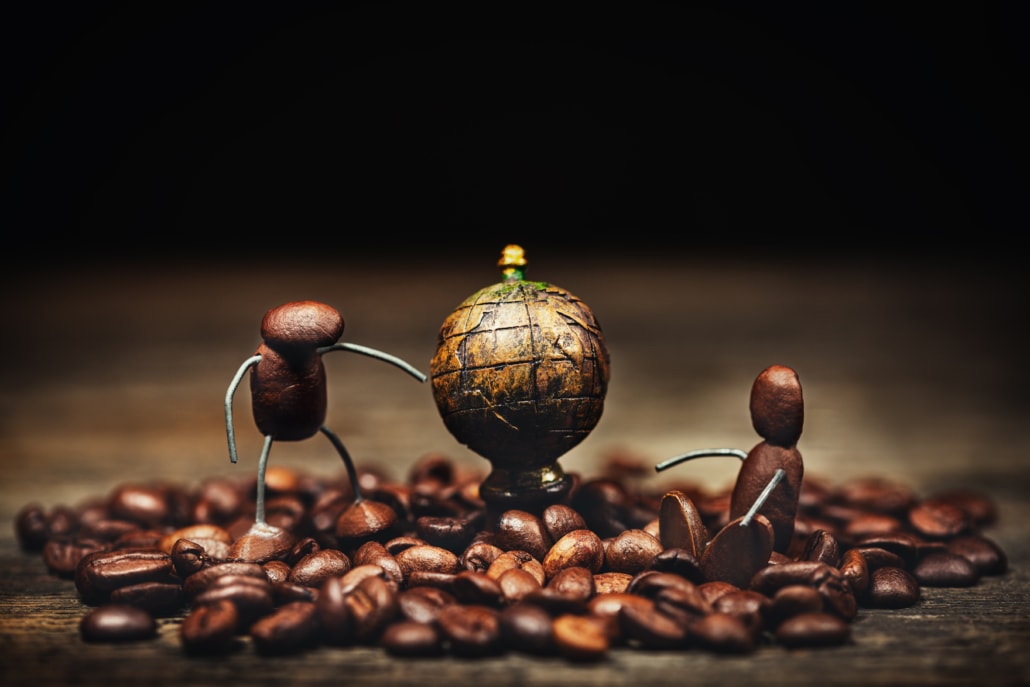
But even then, there were no signs that our history of coffee was slowing down in any way.
Maybe, the little beans had only little land left to conquer. However, there was so much more to our coffee world.
Countless innovations were developed and established. These innovations took place in coffee roastin, packaging and brewing.
This has eventually changed the beverage and its preparation dramatically in the last 200 years.
The World of High Tech Coffee
During the industrial revolution, the first coffee brewing device, called percolator, was invented.
It was the year of 1818, when a Parisian metalsmith came up with this device. In fact, the percolator is still used until today.
Sure, some technical adjustments and improvements have been made over time. But the main device’s functionality basically remained the same.
Around 50 years after its invention, the percolator also made it to the United States. In 1865, James H. Nason patented the first American made percolator which was traded all over the world then.
Just one year earlier, namely in 1864, the first ‘modern’ coffee roaster was born.
Jabez Burns from New York was the inventor. His device was quite revolutionary in regards of coffee roasting.
For the first time, you didn’t necessarily need to hold your roaster over a fire anymore.
Additionally, Jabez Burns patented his invention and machine. Nowadays, many regard him and his device to be the grandfather of all modern coffee roasting machines.
However and from our modern perspective, some people may look at the beginning of coffee mass production as a downfall in our history of coffee.
Nonetheless, it was a massive and very much noteworthy achievement at the time. It really accelerated the worldwide coffee distribution and its consumption even more.
Moreover, John Arbuckle invented the first coffee packaging machine in 1871.
His machine did not only fill and weigh the coffee beans automatically. But, the same device also properly sealed and labeled the coffee in paper packages.
This invention and its commercial success turned the company, Arbuckles, into a huge success story. In fact, it became the largest importer of coffee in the world.
Arbuckles also owned the most merchant ships. These were constantly shipping coffee from South America back to the States.
Two New Coffee Giants Enter the Stage
Around the turn of the 19th century, our coffee world welcomed two of the most used coffee items in our modern days.
The first coffee drink invention is directly linked to the opening of the Maxwell House in 1886.
Joel Creek initially named his coffee blend after the fancy Maxwell House Hotel. It was especially famous for the seven American presidents who used to stay there.
About half a century later and right in the middle of World War II, instant coffee (internal link) entered the stage of coffee. And, it has never left again since then.
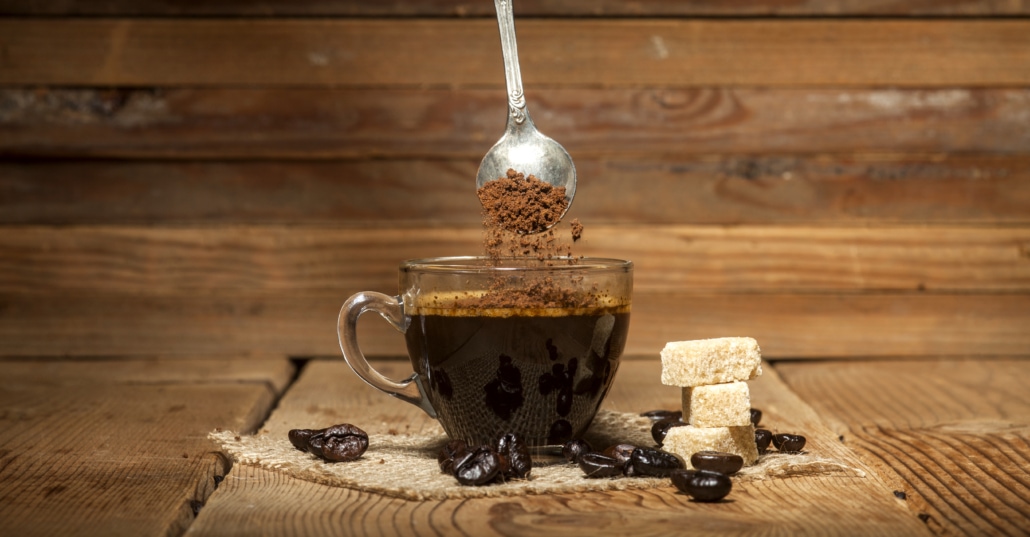
Above all others, Maxwell House instant coffee firstly became a staple for both soldiers and civilians at the time same time.
The next coffee giant just followed shortly after.
In 1901, the Italian Luigi Bezzera invented the first espresso machine.
Today, many of our world’s most popular coffee drinks are based on espresso.
Back then, it was the first commercial espresso machine. The device was quite impressive. Because, it used water and steam under high pressure to brew coffee really fast.
There was nothing similar before.
Furthermore, Luigi actually designed the machine out of own necessity. He was simply hoping and trying to efficiently safe time to make coffee.
So, his employees could get back to other work faster.
The Evolution of Espresso – History of Coffee
Luigi may have invented the first espresso machine. But, the coffee produced by the original machine tasted extremely bitter.
In 1905, Desiderio Pavoni purchased the patent for Luigi’s original espresso machine. He was determined to significantly make it better.
Soon after, Desiderio found out that the bitterness is resulting from the steam and the high temperatures.
Hence, he chose that the temperature should not exceed 195 degrees. Additionally, Desiderio established to use as much as 9 BAR pressure on average.
These tweaks already improved the espresso quality a lot.
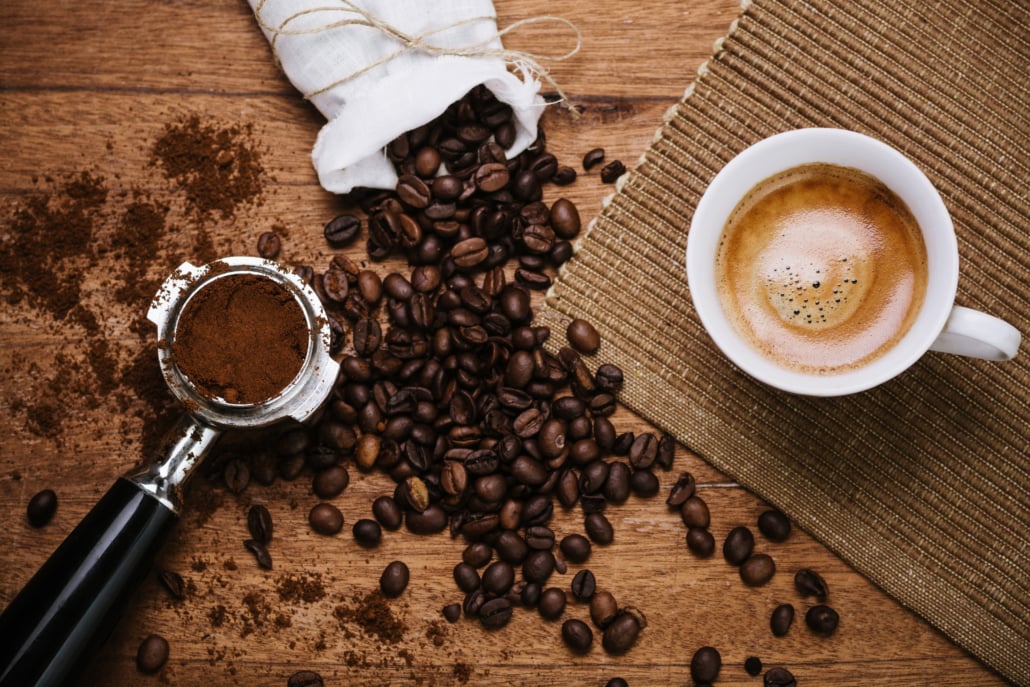
Furthermore, another Italian, named Achille Gaggia, took the espresso machine another step forward about 40 years later.
His idea was to use a piston. This is to extract the coffee at an even higher pressure.
Thanks to the new advancement, the machine produced the today’s widely appreciated layer of crema atop each shot of espresso.
Around the same time, the cappuccino also finally established itself as a very popular single coffee drink creation.
Overall, our history of coffee became increasingly diverse.
More and more special coffee drinks and preparation types saw the light of birth.
The Path of Coffee Creativity Continues
In 1908, also the development of drip coffee took a major step forward.
And, all of this thanks to a German housewife by the name of Melitta Bentz. She also founded the namesake company Melitta. It still operates under family control until this day.
Melitta Bentz created the first paper coffee filter. For this, she was simply using her son’s school papers.
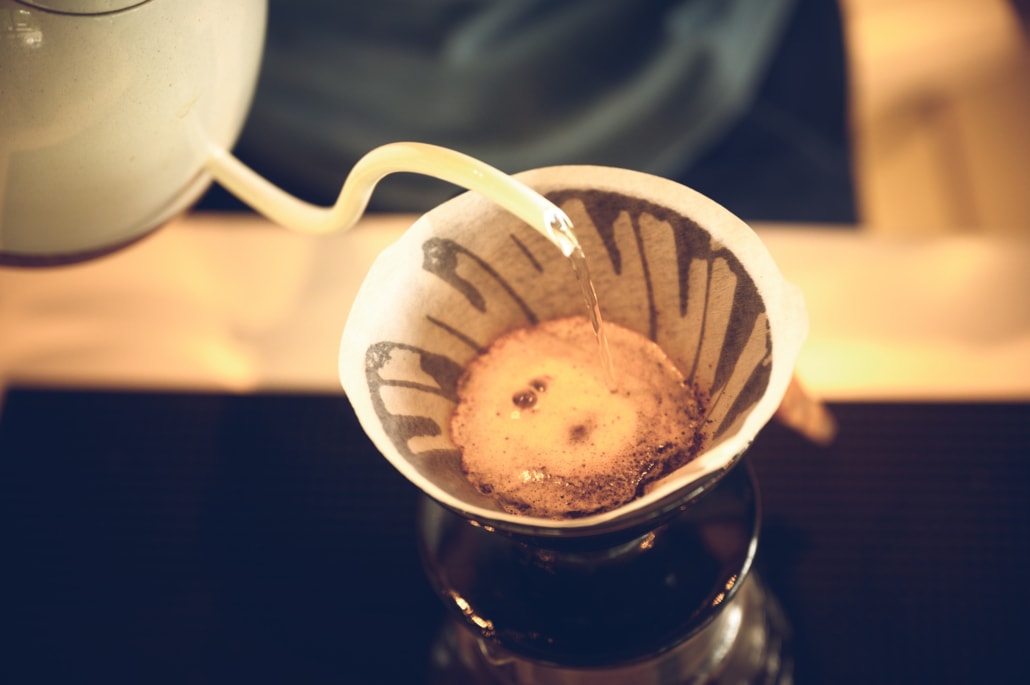
Then, a patent was issued and a hugely successful company grew out of it.
At the same time, something similarly extraordinary happened on the other side of the planet.
In the early 1900’s, the Brazilian government approached Nestle and asked them for their help. They wanted to find a way to better utilize all of Brazil’s coffee waste. The coffee nation simply produced too much of it.
It took a few years of research. But eventually, the process of freeze drying coffee to make an instant cup of coffee was born.
I am pretty sure that you have heard of it already. The coffee produced is Nescafe. It is the world’s leading coffee brand today.
Furthermore, another defining event took place in our history of coffee in the 1920’s.
Namely, it was the time when the US government enacted the Prohibition. People were no longer allowed to legally purchase alcohol at all.
As you can imagine, coffee sales literally went through the roof during this time.
People were looking for a stimulating alternative to alcohol. And, coffee seemed to be a very suitable solution.
In addition, the American Science Newsletter declared coffee to be beneficial in 1926. This gave the beverage an extra boost in popularity.
Today, people widely know that coffee comes with a lot of great health benefits. On top, it may even make us happier and live longer.
Second Wave of Coffee
About 50 years later, namely during the 1960’s, our coffee world went through another revolution.
One of the main characters was the Dutch-American, Alfred Peet. His father roasted coffee in the Netherlands.
Alfred decided to migrate to the United States and took his family’s craft with him to California. In 1966, he opened his own shop, Peet’s Coffee, in Berkely.
Many coffee historians see this as the marking point of the early beginnings of specialty coffee.
A few years after Peet opened his shop, he shared his coffee knowledge and roasting techniques with a couple of good friends.
Furthermore, these friends even joined his staff over the Christmas season. So, they can learn more about the business characteristics to hopefully open their own coffee shop.
With Peet’s permission, his friends opened their first shop in Seattle. They were using the coffee beans Peet roasted and roughly copied his store layout as well.
This coffee star was called Starbucks.
The Early Years of Starbucks
In the beginning, Starbucks was far from what we know it for today.
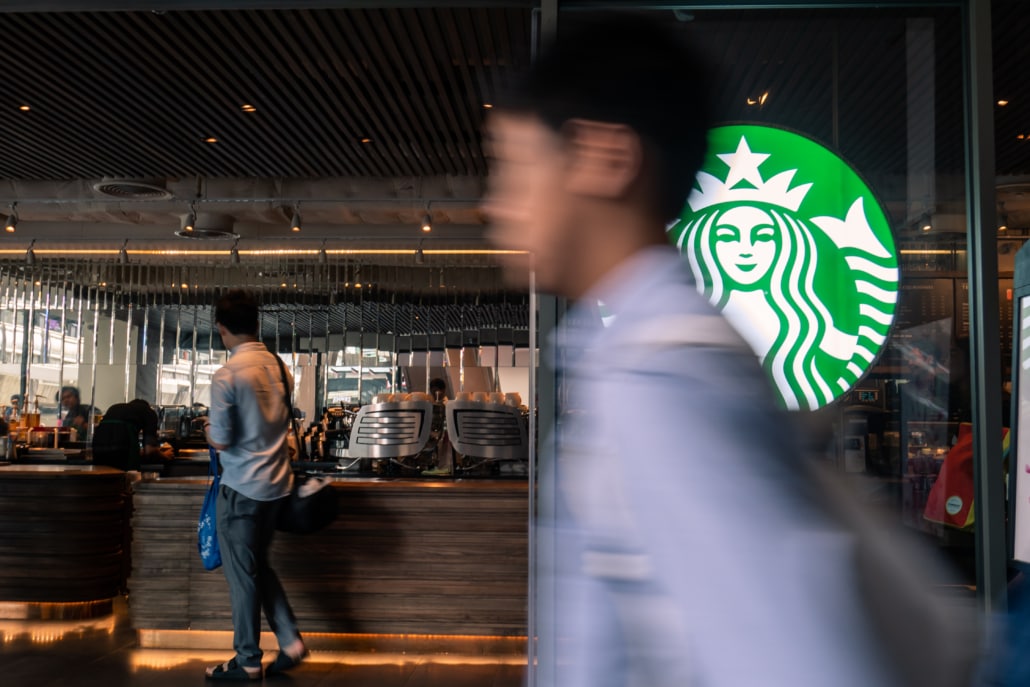
During their first business year, the Starbucks coffee shop partners purchased a coffee roaster. They then started roasting and selling their own coffee bean products.
So, in the beginning, they only sold coffee beans. Starbucks didn’t even sell brewed coffee at the time.
In fact, you could only get coffee beans at Starbucks in the early 1970’s.
However, this most certainly changed when Howard Schultz joined the coffee enterprise. Howard was a salesman. For years, he had been selling drip coffee makers for a living before.
In 1982, he joined Starbucks as their new Director of Marketing.
Especially his recent trips to Milan had extremely inspired him. There, he experienced and loved all of the uniquely inviting coffee houses on literally every street corner in Italy.
These small cafes did not only serve espressos in various forms. But, they also functioned as local meeting places for society.
People were gathering for a delicious cup of coffee and a lively chat.
Howard took his experiences and ideas back home and tried to convince the owners to not only sell coffee beans. They should also make and serve actual coffee beverages.
However, the owners disagreed and didn’t share his enthusiasm.
Their goal was to simply continue focusing on roasting and selling quality coffee beans only.
The Rise of Starbucks
In 1984, Starbucks entirely bought Peet’s company. Thus, they acquired their original mentor’s business.
The following year, not being happy with Starbuck’s current business plan, Howard Schultz quit the company.
Shortly after, he started his own coffee company, namely Il Giornale. His company’s goal was to focus on serving quality coffee drinks.
Immediately, the company had great success with its concept.
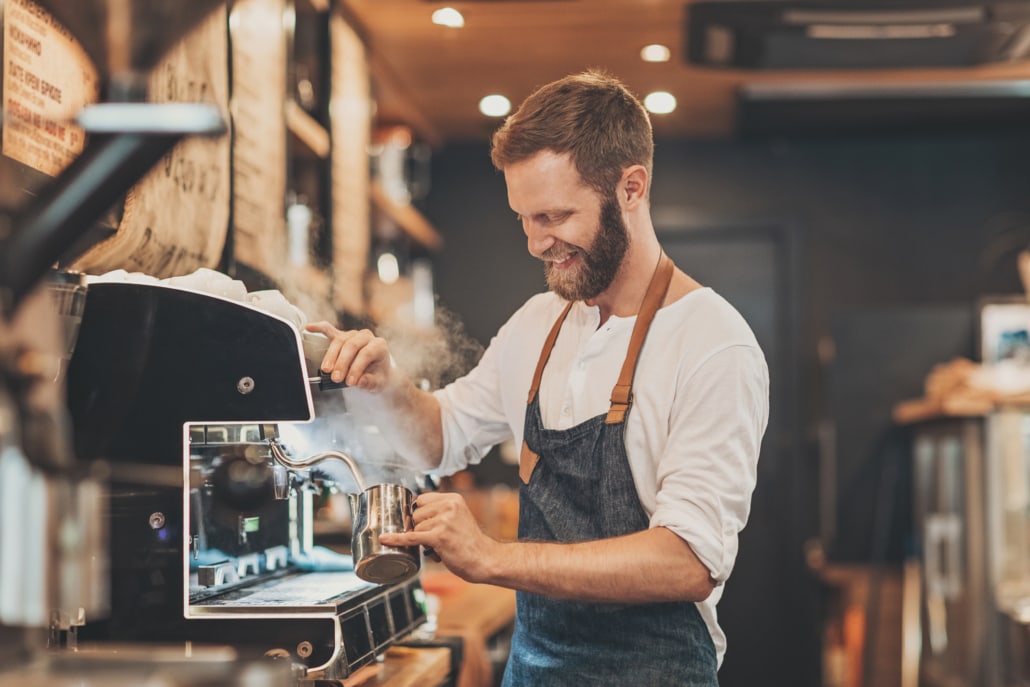
Consequently, Howard Schultz’s coffee shops quickly outmatched the ones from Starbucks. Eventually, he purchased the whole company for 3.8 million US dollars in 1987.
As a result, Howard was finally able to combine the roasting techniques of Starbucks. And, the Italian service concept of his own cafes.
After, the new formed Starbucks really took off as the leading coffee shop company.
Since then, tens of thousands of stores have been opened everywhere. The goal was putting Starbucks in literally every country and their local communities.
Is Starbucks good or bad?
Some coffee enthusiasts are not particularly fond of major coffee franchises such as Starbucks.
However, whether or not you and me may like Starbucks is irrelevant.
Overall, they have started something that we can maybe all be grateful for. They were the pioneers and led the second wave of coffee. Not only in the United States but ultimately worldwide.
Service concepts such as Starbucks brought back the notion that fresh roasted and ground coffee was more enjoyable than pre-ground tins purchased in grocery stores.
Romantically speaking, one could say that our coffee culture was revived again. Its original values of joyful taste and social gatherings became the focus again.
Companies like Starbucks created the modern café experience.
This is combining freshly roasted beans for sale. And, with the service of brewed coffee and local community hubs.
Howard and Starbucks started a coffee fire and revolution. That not even they themselves would have been able to put out again, if they tried.
However, our coffee’s evolution is not showing any signs of slowing down.
Especially the coffee-brewing industry continues to grow until today. More than ever, individual and franchise coffee shops are opening everywhere, all the time.
Back to Coffee Roots
The latest trend seems to be returning to quality micro roasted coffee beans over mass produced coffee.
Especially coffee experiences like single cups, pour over coffee or drip coffee bags are increasingly valued and appreciated these days.
These rather more basic and original coffee experiences tend to stand more out compared to the previous and quite common endless refills from the burned coffee pot at many coffee shops.
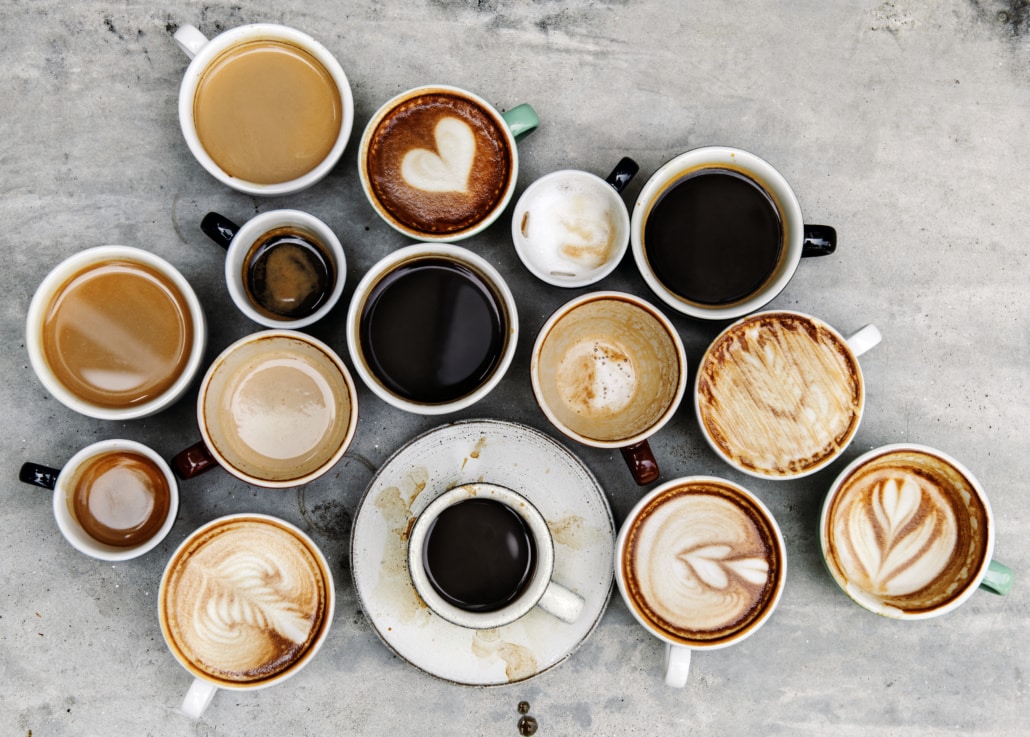
Nowadays, coffee enthusiasts are expecting better quality and service all around the world.
However, this does not only apply to the consumer’s coffee experience. But also to many companies seeking to improve the livelihood of coffee farmers and their communities as well.
In fact, most of the world’s coffee producing countries are still widely underdeveloped and less privileged even until today.
Hence, there is obviously still a lot more room and opportunities to improve. Our world of coffee is expanding and evolving every day.
That’s why our history of coffee is far from over yet.
The Bottom Line – History of Coffee
As you can see, these little coffee beans have made quite a journey all across the globe. And, wherever they arrived the beverage has certainly left its footmark.
Therefore, it’s maybe no surprise that coffee is the today’s second largest traded commodity in the world.
Only oil comes before the empowering beverage.
On average, around 400 billion cups of coffee are consumed every year. And, these numbers are still steadily rising. Hence, it is very likely that coffee will continue being around for a much more longer time.
Indeed, coffee has quite literally changed our world.
From ancient monks and goat herders chewing coffee beans and brewing unroasted coffee, to modern barista championships and perfectly looking latte art on our lattes.
Eventually, we are all playing our little part in the history of coffee.
Well, it is really fascinating to see what other amazing creations of coffee will enrichen our coffee life in the future.
Even today, there are various coffee recipes, alcoholic drinks, strangest and most expensive coffee types, cold and nitro brew. The list of creative coffee inventions goes on and on.
So, how about you?
What do you find most interesting about our history of coffee? And, how did it maybe affect your local community and coffee shop culture?
Which are one of your greatest memories you are linking to coffee?
Feel free to share your coffee experiences with us.
Until then, stay safe, healthy and properly caffeinated.
Cheers!
Related Posts
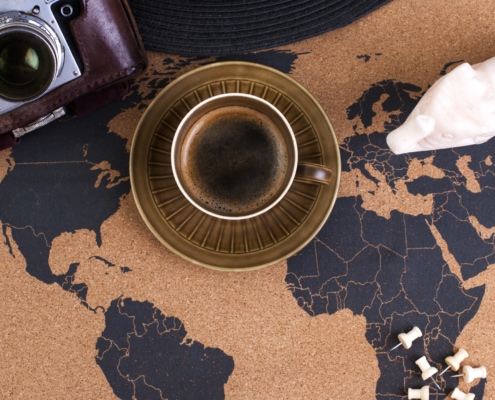 https://www.siamhillscoffee.com/wp-content/uploads/iStock-1074560652.jpg
1414
2121
Siamhillscoffee
https://www.siamhillscoffee.com/wp-content/uploads/coffee-logo.png
Siamhillscoffee2021-04-25 11:37:482021-04-25 11:37:488 Fascinating Facts About The History of Coffee – ‘A Drink For The Devil’ –
https://www.siamhillscoffee.com/wp-content/uploads/iStock-1074560652.jpg
1414
2121
Siamhillscoffee
https://www.siamhillscoffee.com/wp-content/uploads/coffee-logo.png
Siamhillscoffee2021-04-25 11:37:482021-04-25 11:37:488 Fascinating Facts About The History of Coffee – ‘A Drink For The Devil’ –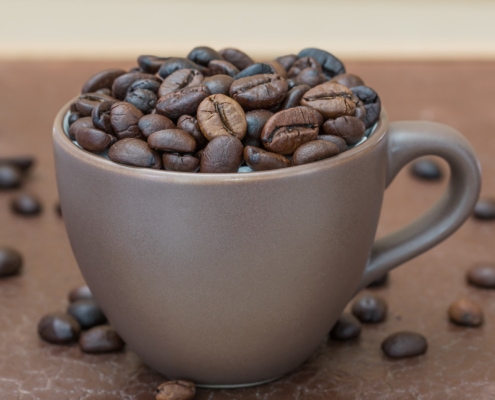 https://www.siamhillscoffee.com/wp-content/uploads/What-is-Liberica-Coffee-–-The-Worlds-Rarest-Coffee-Type-–-1.jpg
1384
2165
Siamhillscoffee
https://www.siamhillscoffee.com/wp-content/uploads/coffee-logo.png
Siamhillscoffee2021-04-25 11:33:222021-04-25 11:33:22What is Liberica Coffee – The World’s Rarest Coffee Type –
https://www.siamhillscoffee.com/wp-content/uploads/What-is-Liberica-Coffee-–-The-Worlds-Rarest-Coffee-Type-–-1.jpg
1384
2165
Siamhillscoffee
https://www.siamhillscoffee.com/wp-content/uploads/coffee-logo.png
Siamhillscoffee2021-04-25 11:33:222021-04-25 11:33:22What is Liberica Coffee – The World’s Rarest Coffee Type –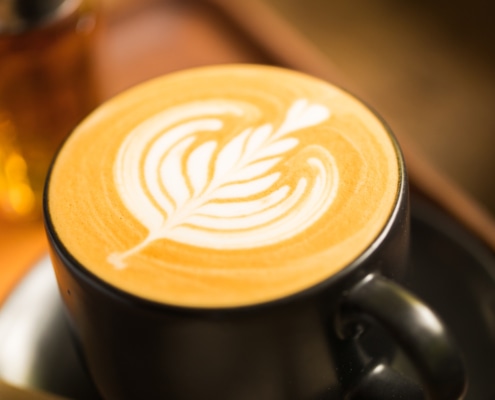 https://www.siamhillscoffee.com/wp-content/uploads/What-is-Latte-Art-–-Its-Fundamentals-History-and-Techniques-–-1.jpg
1414
2121
Siamhillscoffee
https://www.siamhillscoffee.com/wp-content/uploads/coffee-logo.png
Siamhillscoffee2021-04-25 11:28:272021-04-25 11:28:27What is Latte Art – Its Fundamentals, History and Techniques –
https://www.siamhillscoffee.com/wp-content/uploads/What-is-Latte-Art-–-Its-Fundamentals-History-and-Techniques-–-1.jpg
1414
2121
Siamhillscoffee
https://www.siamhillscoffee.com/wp-content/uploads/coffee-logo.png
Siamhillscoffee2021-04-25 11:28:272021-04-25 11:28:27What is Latte Art – Its Fundamentals, History and Techniques –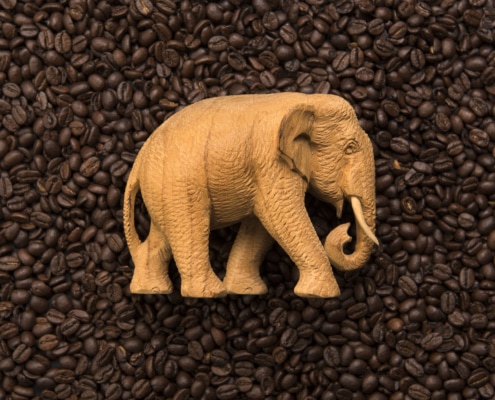 https://www.siamhillscoffee.com/wp-content/uploads/Elephant-coffee-–-The-new-luxury-coffee-–-How-great-is-it-1.jpg
1445
2075
Siamhillscoffee
https://www.siamhillscoffee.com/wp-content/uploads/coffee-logo.png
Siamhillscoffee2021-04-25 11:23:422021-04-25 11:23:42Elephant coffee – The new luxury coffee – How great is it?
https://www.siamhillscoffee.com/wp-content/uploads/Elephant-coffee-–-The-new-luxury-coffee-–-How-great-is-it-1.jpg
1445
2075
Siamhillscoffee
https://www.siamhillscoffee.com/wp-content/uploads/coffee-logo.png
Siamhillscoffee2021-04-25 11:23:422021-04-25 11:23:42Elephant coffee – The new luxury coffee – How great is it? https://www.siamhillscoffee.com/wp-content/uploads/What-is-Caffeine-–-Is-it-Good-or-Bad-for-Your-Health-–-1.jpg
1414
2121
Siamhillscoffee
https://www.siamhillscoffee.com/wp-content/uploads/coffee-logo.png
Siamhillscoffee2021-04-25 11:19:442021-04-25 11:19:44What is Caffeine? – Is it Good or Bad for Your Health –
https://www.siamhillscoffee.com/wp-content/uploads/What-is-Caffeine-–-Is-it-Good-or-Bad-for-Your-Health-–-1.jpg
1414
2121
Siamhillscoffee
https://www.siamhillscoffee.com/wp-content/uploads/coffee-logo.png
Siamhillscoffee2021-04-25 11:19:442021-04-25 11:19:44What is Caffeine? – Is it Good or Bad for Your Health –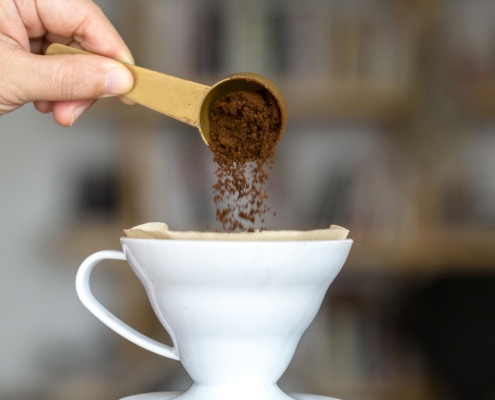 https://www.siamhillscoffee.com/wp-content/uploads/Filter-Coffee-and-Instant-Coffee-–-Whats-the-Difference-–-1.jpg
1414
2121
Siamhillscoffee
https://www.siamhillscoffee.com/wp-content/uploads/coffee-logo.png
Siamhillscoffee2021-04-25 11:15:412021-04-25 11:15:41Filter Coffee and Instant Coffee – What’s the Difference? –
https://www.siamhillscoffee.com/wp-content/uploads/Filter-Coffee-and-Instant-Coffee-–-Whats-the-Difference-–-1.jpg
1414
2121
Siamhillscoffee
https://www.siamhillscoffee.com/wp-content/uploads/coffee-logo.png
Siamhillscoffee2021-04-25 11:15:412021-04-25 11:15:41Filter Coffee and Instant Coffee – What’s the Difference? – https://www.siamhillscoffee.com/wp-content/uploads/How-Much-Caffeine-is-in-a-Cup-of-Coffee-All-You-Need-to-Know-–-1.jpg
1414
2121
Siamhillscoffee
https://www.siamhillscoffee.com/wp-content/uploads/coffee-logo.png
Siamhillscoffee2021-04-25 11:10:082021-04-25 11:10:08How Much Caffeine is in a Cup of Coffee – All You Need to Know –
https://www.siamhillscoffee.com/wp-content/uploads/How-Much-Caffeine-is-in-a-Cup-of-Coffee-All-You-Need-to-Know-–-1.jpg
1414
2121
Siamhillscoffee
https://www.siamhillscoffee.com/wp-content/uploads/coffee-logo.png
Siamhillscoffee2021-04-25 11:10:082021-04-25 11:10:08How Much Caffeine is in a Cup of Coffee – All You Need to Know –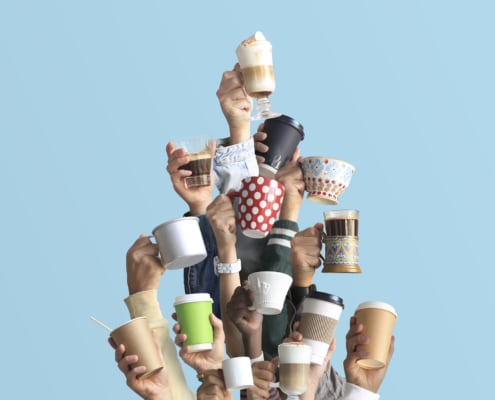 https://www.siamhillscoffee.com/wp-content/uploads/Cappuccino-and-Latte-–-Whats-The-Difference-–-1.jpg
1399
2143
Siamhillscoffee
https://www.siamhillscoffee.com/wp-content/uploads/coffee-logo.png
Siamhillscoffee2021-04-25 11:05:382021-04-25 11:11:21Cappuccino and Latte – What’s The Difference –
https://www.siamhillscoffee.com/wp-content/uploads/Cappuccino-and-Latte-–-Whats-The-Difference-–-1.jpg
1399
2143
Siamhillscoffee
https://www.siamhillscoffee.com/wp-content/uploads/coffee-logo.png
Siamhillscoffee2021-04-25 11:05:382021-04-25 11:11:21Cappuccino and Latte – What’s The Difference –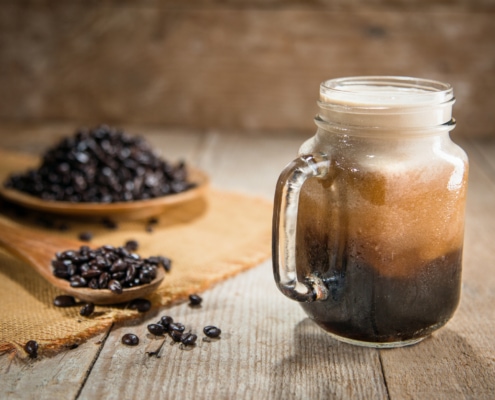 https://www.siamhillscoffee.com/wp-content/uploads/Nitro-Coffee-or-Regular-Coffee-Which-is-Better-–-1.jpg
1414
2121
Siamhillscoffee
https://www.siamhillscoffee.com/wp-content/uploads/coffee-logo.png
Siamhillscoffee2021-04-25 11:01:372021-04-25 11:01:37Nitro Coffee or Regular Coffee – Which is Better –
https://www.siamhillscoffee.com/wp-content/uploads/Nitro-Coffee-or-Regular-Coffee-Which-is-Better-–-1.jpg
1414
2121
Siamhillscoffee
https://www.siamhillscoffee.com/wp-content/uploads/coffee-logo.png
Siamhillscoffee2021-04-25 11:01:372021-04-25 11:01:37Nitro Coffee or Regular Coffee – Which is Better –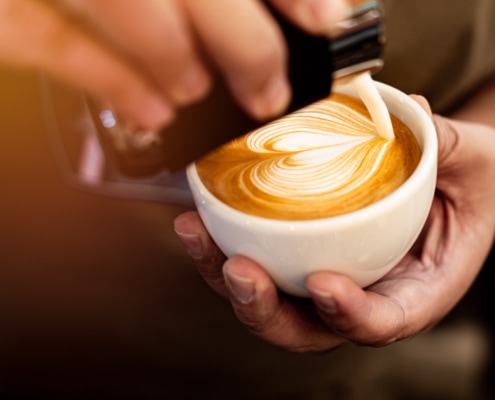 https://www.siamhillscoffee.com/wp-content/uploads/Is-Latte-Art-Good-or-Bad-–-Does-Latte-Art-Make-our-Coffee-Better-or-Worse-–-1.jpg
1412
2122
Siamhillscoffee
https://www.siamhillscoffee.com/wp-content/uploads/coffee-logo.png
Siamhillscoffee2021-04-25 10:57:092021-04-25 11:02:29Is Latte Art Good or Bad? – Does Latte Art Make our Coffee Better or Worse? –
https://www.siamhillscoffee.com/wp-content/uploads/Is-Latte-Art-Good-or-Bad-–-Does-Latte-Art-Make-our-Coffee-Better-or-Worse-–-1.jpg
1412
2122
Siamhillscoffee
https://www.siamhillscoffee.com/wp-content/uploads/coffee-logo.png
Siamhillscoffee2021-04-25 10:57:092021-04-25 11:02:29Is Latte Art Good or Bad? – Does Latte Art Make our Coffee Better or Worse? – https://www.siamhillscoffee.com/wp-content/uploads/What-is-a-Dirty-Chai-or-Chai-Tea-Latte-–-A-Complete-Overview-–-1.jpg
1414
2121
Siamhillscoffee
https://www.siamhillscoffee.com/wp-content/uploads/coffee-logo.png
Siamhillscoffee2021-04-03 03:00:442021-04-03 03:00:44What is a Dirty Chai or Chai Tea Latte – A Complete Overview –
https://www.siamhillscoffee.com/wp-content/uploads/What-is-a-Dirty-Chai-or-Chai-Tea-Latte-–-A-Complete-Overview-–-1.jpg
1414
2121
Siamhillscoffee
https://www.siamhillscoffee.com/wp-content/uploads/coffee-logo.png
Siamhillscoffee2021-04-03 03:00:442021-04-03 03:00:44What is a Dirty Chai or Chai Tea Latte – A Complete Overview – https://www.siamhillscoffee.com/wp-content/uploads/Filter-Coffee-and-Espresso-–-What-is-the-Difference-–-1.jpg
1397
2146
Siamhillscoffee
https://www.siamhillscoffee.com/wp-content/uploads/coffee-logo.png
Siamhillscoffee2021-04-03 02:55:042021-04-03 02:55:04Filter Coffee and Espresso – What is the Difference? –
https://www.siamhillscoffee.com/wp-content/uploads/Filter-Coffee-and-Espresso-–-What-is-the-Difference-–-1.jpg
1397
2146
Siamhillscoffee
https://www.siamhillscoffee.com/wp-content/uploads/coffee-logo.png
Siamhillscoffee2021-04-03 02:55:042021-04-03 02:55:04Filter Coffee and Espresso – What is the Difference? –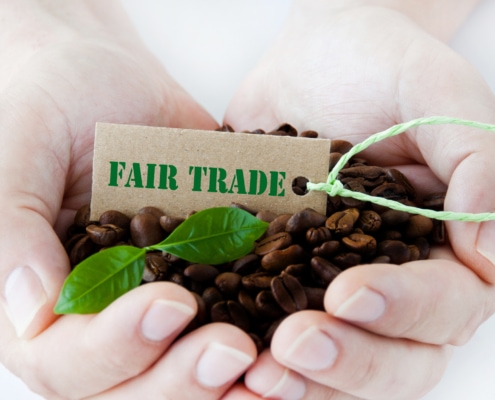 https://www.siamhillscoffee.com/wp-content/uploads/Coffee-and-Fair-Trade-–-Is-Fair-Trade-Coffee-Good-or-Bad-–-1.jpg
1414
2121
Siamhillscoffee
https://www.siamhillscoffee.com/wp-content/uploads/coffee-logo.png
Siamhillscoffee2021-03-21 04:14:092021-03-21 04:14:09Coffee and Fair Trade – Is Fair Trade Coffee Good or Bad? –
https://www.siamhillscoffee.com/wp-content/uploads/Coffee-and-Fair-Trade-–-Is-Fair-Trade-Coffee-Good-or-Bad-–-1.jpg
1414
2121
Siamhillscoffee
https://www.siamhillscoffee.com/wp-content/uploads/coffee-logo.png
Siamhillscoffee2021-03-21 04:14:092021-03-21 04:14:09Coffee and Fair Trade – Is Fair Trade Coffee Good or Bad? –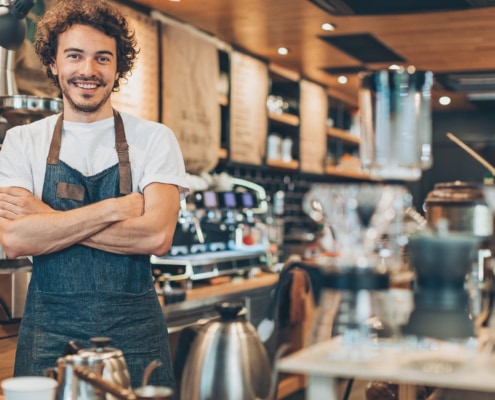 https://www.siamhillscoffee.com/wp-content/uploads/How-To-Open-A-Coffee-Shop-The-Coffee-Shop-Equipment-List-You-Need-1.jpg
1414
2121
Siamhillscoffee
https://www.siamhillscoffee.com/wp-content/uploads/coffee-logo.png
Siamhillscoffee2021-03-21 04:08:192021-03-21 04:08:19How To Open A Coffee Shop – The Coffee Shop Equipment List You Need
https://www.siamhillscoffee.com/wp-content/uploads/How-To-Open-A-Coffee-Shop-The-Coffee-Shop-Equipment-List-You-Need-1.jpg
1414
2121
Siamhillscoffee
https://www.siamhillscoffee.com/wp-content/uploads/coffee-logo.png
Siamhillscoffee2021-03-21 04:08:192021-03-21 04:08:19How To Open A Coffee Shop – The Coffee Shop Equipment List You Need https://www.siamhillscoffee.com/wp-content/uploads/What-is-Red-Eye-Coffee-–-Everything-You-Need-to-Know-About-This-Eye-Opener-–-1.jpg
1414
2121
Siamhillscoffee
https://www.siamhillscoffee.com/wp-content/uploads/coffee-logo.png
Siamhillscoffee2021-03-21 04:01:332021-03-21 04:01:33What is Red Eye Coffee – Everything You Need to Know About This Eye-Opener –
https://www.siamhillscoffee.com/wp-content/uploads/What-is-Red-Eye-Coffee-–-Everything-You-Need-to-Know-About-This-Eye-Opener-–-1.jpg
1414
2121
Siamhillscoffee
https://www.siamhillscoffee.com/wp-content/uploads/coffee-logo.png
Siamhillscoffee2021-03-21 04:01:332021-03-21 04:01:33What is Red Eye Coffee – Everything You Need to Know About This Eye-Opener –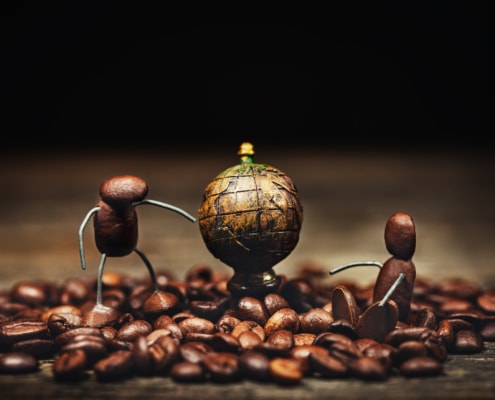 https://www.siamhillscoffee.com/wp-content/uploads/Top-10-Strangest-Coffee-Types-Beans-Special-Coffee-Experiences-–-1.jpg
1414
2121
Siamhillscoffee
https://www.siamhillscoffee.com/wp-content/uploads/coffee-logo.png
Siamhillscoffee2021-03-14 04:07:592021-03-14 04:07:59Top 10 Strangest Coffee Types & Beans – Special Coffee Experiences –
https://www.siamhillscoffee.com/wp-content/uploads/Top-10-Strangest-Coffee-Types-Beans-Special-Coffee-Experiences-–-1.jpg
1414
2121
Siamhillscoffee
https://www.siamhillscoffee.com/wp-content/uploads/coffee-logo.png
Siamhillscoffee2021-03-14 04:07:592021-03-14 04:07:59Top 10 Strangest Coffee Types & Beans – Special Coffee Experiences –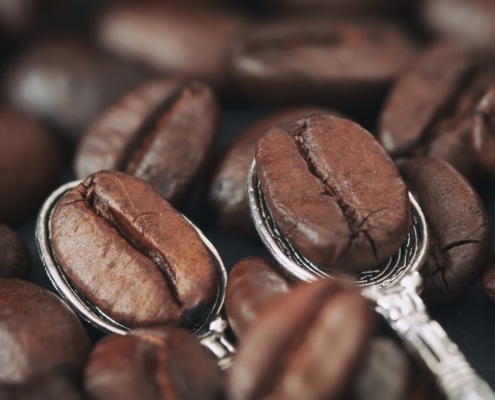 https://www.siamhillscoffee.com/wp-content/uploads/Coffee-and-Antioxidants-A-Complete-Overview-–-1.jpg
1413
2122
Siamhillscoffee
https://www.siamhillscoffee.com/wp-content/uploads/coffee-logo.png
Siamhillscoffee2021-03-14 03:52:072021-03-14 03:52:07Coffee and Antioxidants – A Complete Overview –
https://www.siamhillscoffee.com/wp-content/uploads/Coffee-and-Antioxidants-A-Complete-Overview-–-1.jpg
1413
2122
Siamhillscoffee
https://www.siamhillscoffee.com/wp-content/uploads/coffee-logo.png
Siamhillscoffee2021-03-14 03:52:072021-03-14 03:52:07Coffee and Antioxidants – A Complete Overview – https://www.siamhillscoffee.com/wp-content/uploads/What-is-an-Espresso-–-A-Complete-Guide-–-1.jpg
1414
2119
Siamhillscoffee
https://www.siamhillscoffee.com/wp-content/uploads/coffee-logo.png
Siamhillscoffee2021-03-14 03:48:102021-03-14 03:48:10What is an Espresso? – A Complete Guide –
https://www.siamhillscoffee.com/wp-content/uploads/What-is-an-Espresso-–-A-Complete-Guide-–-1.jpg
1414
2119
Siamhillscoffee
https://www.siamhillscoffee.com/wp-content/uploads/coffee-logo.png
Siamhillscoffee2021-03-14 03:48:102021-03-14 03:48:10What is an Espresso? – A Complete Guide – https://www.siamhillscoffee.com/wp-content/uploads/Caffeine-Overdose-–-A-Review-on-How-Much-is-Too-Much-–-1.jpg
1414
2121
Siamhillscoffee
https://www.siamhillscoffee.com/wp-content/uploads/coffee-logo.png
Siamhillscoffee2021-03-14 03:44:312021-03-14 03:44:31Caffeine Overdose – A Review on How Much is Too Much –
https://www.siamhillscoffee.com/wp-content/uploads/Caffeine-Overdose-–-A-Review-on-How-Much-is-Too-Much-–-1.jpg
1414
2121
Siamhillscoffee
https://www.siamhillscoffee.com/wp-content/uploads/coffee-logo.png
Siamhillscoffee2021-03-14 03:44:312021-03-14 03:44:31Caffeine Overdose – A Review on How Much is Too Much –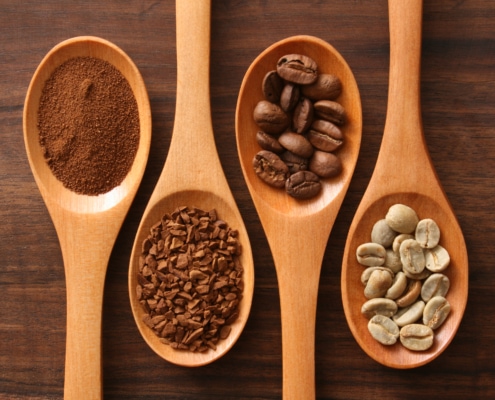 https://www.siamhillscoffee.com/wp-content/uploads/Top-6-Differences-Between-Ground-Coffee-And-Instant-Coffee-1-scaled.jpg
1920
2560
Siamhillscoffee
https://www.siamhillscoffee.com/wp-content/uploads/coffee-logo.png
Siamhillscoffee2021-03-14 03:40:432021-03-14 03:40:43Top 6 Differences Between Ground Coffee And Instant Coffee
https://www.siamhillscoffee.com/wp-content/uploads/Top-6-Differences-Between-Ground-Coffee-And-Instant-Coffee-1-scaled.jpg
1920
2560
Siamhillscoffee
https://www.siamhillscoffee.com/wp-content/uploads/coffee-logo.png
Siamhillscoffee2021-03-14 03:40:432021-03-14 03:40:43Top 6 Differences Between Ground Coffee And Instant Coffee https://www.siamhillscoffee.com/wp-content/uploads/Lose-Weight-with-Coffee-–-Does-Coffee-Help-Burning-Fat-–-1.jpg
1412
2122
Siamhillscoffee
https://www.siamhillscoffee.com/wp-content/uploads/coffee-logo.png
Siamhillscoffee2021-03-14 03:34:242021-03-14 03:34:24Lose Weight with Coffee – Does Coffee Help Burning Fat? –
https://www.siamhillscoffee.com/wp-content/uploads/Lose-Weight-with-Coffee-–-Does-Coffee-Help-Burning-Fat-–-1.jpg
1412
2122
Siamhillscoffee
https://www.siamhillscoffee.com/wp-content/uploads/coffee-logo.png
Siamhillscoffee2021-03-14 03:34:242021-03-14 03:34:24Lose Weight with Coffee – Does Coffee Help Burning Fat? – https://www.siamhillscoffee.com/wp-content/uploads/What-is-a-Cafe-Latte-–-A-Complete-Guide-–-1.jpg
1414
2120
Siamhillscoffee
https://www.siamhillscoffee.com/wp-content/uploads/coffee-logo.png
Siamhillscoffee2021-03-14 03:25:172021-03-14 03:25:17What is a Café Latte? – A Complete Guide –
https://www.siamhillscoffee.com/wp-content/uploads/What-is-a-Cafe-Latte-–-A-Complete-Guide-–-1.jpg
1414
2120
Siamhillscoffee
https://www.siamhillscoffee.com/wp-content/uploads/coffee-logo.png
Siamhillscoffee2021-03-14 03:25:172021-03-14 03:25:17What is a Café Latte? – A Complete Guide –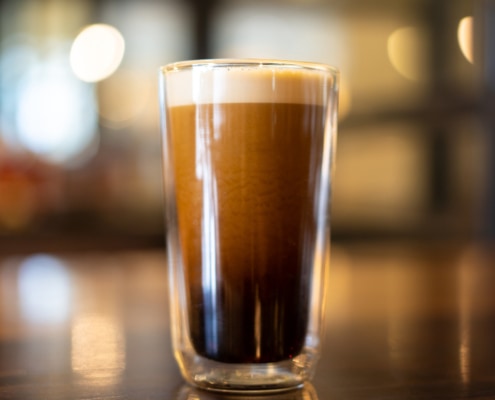 https://www.siamhillscoffee.com/wp-content/uploads/Beer-Coffee-Everybodys-Dream-Come-True-–-1.jpg
1414
2121
Siamhillscoffee
https://www.siamhillscoffee.com/wp-content/uploads/coffee-logo.png
Siamhillscoffee2021-03-14 03:21:082021-03-14 03:21:08Beer Coffee – Everybody’s Dream Come True –
https://www.siamhillscoffee.com/wp-content/uploads/Beer-Coffee-Everybodys-Dream-Come-True-–-1.jpg
1414
2121
Siamhillscoffee
https://www.siamhillscoffee.com/wp-content/uploads/coffee-logo.png
Siamhillscoffee2021-03-14 03:21:082021-03-14 03:21:08Beer Coffee – Everybody’s Dream Come True – https://www.siamhillscoffee.com/wp-content/uploads/Coffee-Basics-–-Everything-to-Know-About-Types-Roasts-Storage-–-1-scaled.jpg
1707
2560
Siamhillscoffee
https://www.siamhillscoffee.com/wp-content/uploads/coffee-logo.png
Siamhillscoffee2021-03-03 06:50:042021-03-14 03:15:40Coffee Basics – Everything to Know About Types, Roasts & Storage –
https://www.siamhillscoffee.com/wp-content/uploads/Coffee-Basics-–-Everything-to-Know-About-Types-Roasts-Storage-–-1-scaled.jpg
1707
2560
Siamhillscoffee
https://www.siamhillscoffee.com/wp-content/uploads/coffee-logo.png
Siamhillscoffee2021-03-03 06:50:042021-03-14 03:15:40Coffee Basics – Everything to Know About Types, Roasts & Storage –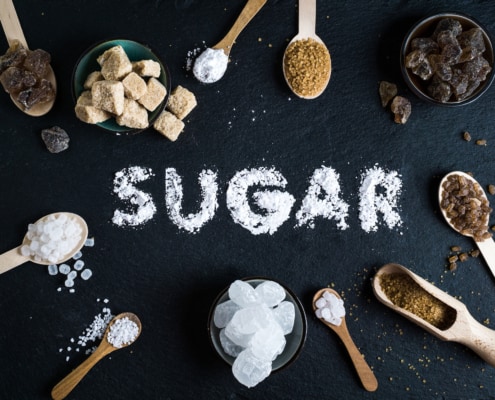 https://www.siamhillscoffee.com/wp-content/uploads/Natural-Coffee-Sweeteners-–-Best-Natural-Sugar-Substitutes-For-You-–-1.jpg
1502
1997
Siamhillscoffee
https://www.siamhillscoffee.com/wp-content/uploads/coffee-logo.png
Siamhillscoffee2021-02-20 05:43:182021-03-03 07:41:19Natural Coffee Sweeteners – Best Natural Sugar Substitutes For You –
https://www.siamhillscoffee.com/wp-content/uploads/Natural-Coffee-Sweeteners-–-Best-Natural-Sugar-Substitutes-For-You-–-1.jpg
1502
1997
Siamhillscoffee
https://www.siamhillscoffee.com/wp-content/uploads/coffee-logo.png
Siamhillscoffee2021-02-20 05:43:182021-03-03 07:41:19Natural Coffee Sweeteners – Best Natural Sugar Substitutes For You – https://www.siamhillscoffee.com/wp-content/uploads/Coffee-Cupping-–-How-to-Professionally-Taste-Coffee-–-1-scaled.jpg
1707
2560
Siamhillscoffee
https://www.siamhillscoffee.com/wp-content/uploads/coffee-logo.png
Siamhillscoffee2021-02-20 05:38:122021-03-03 10:43:47Coffee Cupping – How to Professionally Taste Coffee –
https://www.siamhillscoffee.com/wp-content/uploads/Coffee-Cupping-–-How-to-Professionally-Taste-Coffee-–-1-scaled.jpg
1707
2560
Siamhillscoffee
https://www.siamhillscoffee.com/wp-content/uploads/coffee-logo.png
Siamhillscoffee2021-02-20 05:38:122021-03-03 10:43:47Coffee Cupping – How to Professionally Taste Coffee – https://www.siamhillscoffee.com/wp-content/uploads/10-Best-Coffee-Smoothie-Recipes-–-Your-Perfectly-Delicious-Morning-Buzz-–-1-scaled.jpg
1707
2560
Siamhillscoffee
https://www.siamhillscoffee.com/wp-content/uploads/coffee-logo.png
Siamhillscoffee2021-02-20 05:32:312021-03-03 10:45:5410 Best Coffee Smoothie Recipes – Perfectly Delicious Morning Buzz –
https://www.siamhillscoffee.com/wp-content/uploads/10-Best-Coffee-Smoothie-Recipes-–-Your-Perfectly-Delicious-Morning-Buzz-–-1-scaled.jpg
1707
2560
Siamhillscoffee
https://www.siamhillscoffee.com/wp-content/uploads/coffee-logo.png
Siamhillscoffee2021-02-20 05:32:312021-03-03 10:45:5410 Best Coffee Smoothie Recipes – Perfectly Delicious Morning Buzz –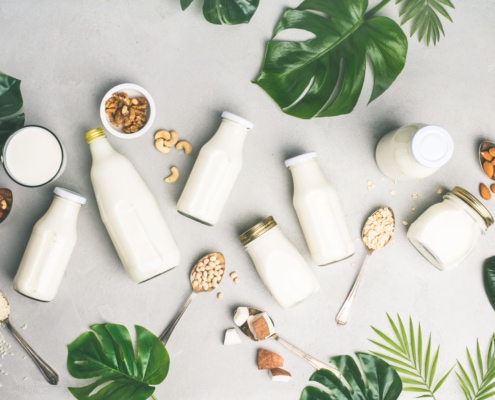 https://www.siamhillscoffee.com/wp-content/uploads/Great-Milk-Alternatives-–-Your-9-Best-Nondairy-Substitutes-for-Milk-–-1-scaled.jpg
1707
2560
Siamhillscoffee
https://www.siamhillscoffee.com/wp-content/uploads/coffee-logo.png
Siamhillscoffee2021-02-20 05:26:492021-03-03 10:47:18Great Milk Alternatives – Your 9 Best Nondairy Substitutes for Milk –
https://www.siamhillscoffee.com/wp-content/uploads/Great-Milk-Alternatives-–-Your-9-Best-Nondairy-Substitutes-for-Milk-–-1-scaled.jpg
1707
2560
Siamhillscoffee
https://www.siamhillscoffee.com/wp-content/uploads/coffee-logo.png
Siamhillscoffee2021-02-20 05:26:492021-03-03 10:47:18Great Milk Alternatives – Your 9 Best Nondairy Substitutes for Milk –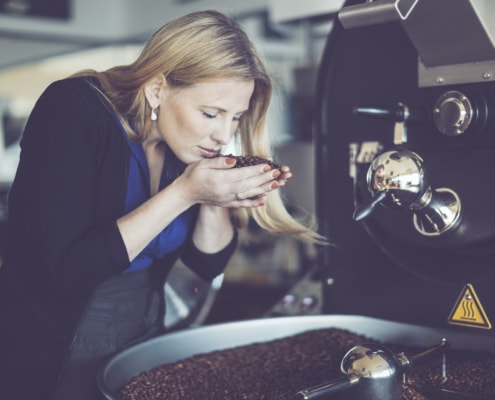 https://www.siamhillscoffee.com/wp-content/uploads/What-is-Coffee-Roasting-–-Everything-You-Need-to-Know-–-1.jpg
1414
2121
Siamhillscoffee
https://www.siamhillscoffee.com/wp-content/uploads/coffee-logo.png
Siamhillscoffee2021-02-20 05:19:592021-03-03 10:49:15What is Coffee Roasting? – Everything You Need to Know –
https://www.siamhillscoffee.com/wp-content/uploads/What-is-Coffee-Roasting-–-Everything-You-Need-to-Know-–-1.jpg
1414
2121
Siamhillscoffee
https://www.siamhillscoffee.com/wp-content/uploads/coffee-logo.png
Siamhillscoffee2021-02-20 05:19:592021-03-03 10:49:15What is Coffee Roasting? – Everything You Need to Know – https://www.siamhillscoffee.com/wp-content/uploads/Butter-Coffee-Myths-versus-Facts-–-1.jpg
1414
2121
Siamhillscoffee
https://www.siamhillscoffee.com/wp-content/uploads/coffee-logo.png
Siamhillscoffee2021-02-20 05:14:182021-03-03 10:50:40Butter Coffee – Myths versus Facts –
https://www.siamhillscoffee.com/wp-content/uploads/Butter-Coffee-Myths-versus-Facts-–-1.jpg
1414
2121
Siamhillscoffee
https://www.siamhillscoffee.com/wp-content/uploads/coffee-logo.png
Siamhillscoffee2021-02-20 05:14:182021-03-03 10:50:40Butter Coffee – Myths versus Facts –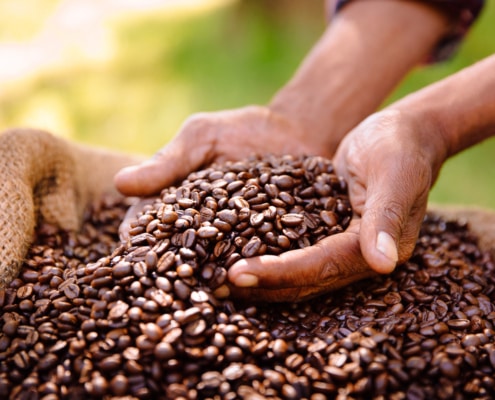 https://www.siamhillscoffee.com/wp-content/uploads/What-is-Specialty-Coffee-–-Everything-You-Need-to-Know-–-1-1.jpg
1414
2121
Siamhillscoffee
https://www.siamhillscoffee.com/wp-content/uploads/coffee-logo.png
Siamhillscoffee2021-02-20 05:10:372021-03-03 10:51:58What is Specialty Coffee? – Everything You Need to Know –
https://www.siamhillscoffee.com/wp-content/uploads/What-is-Specialty-Coffee-–-Everything-You-Need-to-Know-–-1-1.jpg
1414
2121
Siamhillscoffee
https://www.siamhillscoffee.com/wp-content/uploads/coffee-logo.png
Siamhillscoffee2021-02-20 05:10:372021-03-03 10:51:58What is Specialty Coffee? – Everything You Need to Know –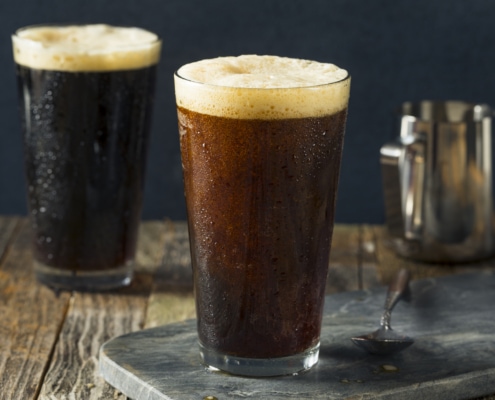 https://www.siamhillscoffee.com/wp-content/uploads/Nitro-Coffee-The-New-Big-Coffee-Trend-–-1.jpg
1414
2121
Siamhillscoffee
https://www.siamhillscoffee.com/wp-content/uploads/coffee-logo.png
Siamhillscoffee2021-02-20 05:03:032021-03-03 10:53:11Nitro Coffee – The New Big Coffee Trend –
https://www.siamhillscoffee.com/wp-content/uploads/Nitro-Coffee-The-New-Big-Coffee-Trend-–-1.jpg
1414
2121
Siamhillscoffee
https://www.siamhillscoffee.com/wp-content/uploads/coffee-logo.png
Siamhillscoffee2021-02-20 05:03:032021-03-03 10:53:11Nitro Coffee – The New Big Coffee Trend –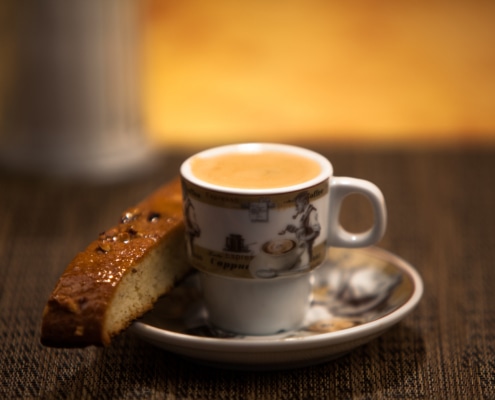 https://www.siamhillscoffee.com/wp-content/uploads/What-is-a-Cafe-Cubano-–-A-Complete-Guide-–-1.jpg
1414
2121
Siamhillscoffee
https://www.siamhillscoffee.com/wp-content/uploads/coffee-logo.png
Siamhillscoffee2021-02-20 04:57:432021-03-03 10:54:47What is a Cafe Cubano – A Complete Guide –
https://www.siamhillscoffee.com/wp-content/uploads/What-is-a-Cafe-Cubano-–-A-Complete-Guide-–-1.jpg
1414
2121
Siamhillscoffee
https://www.siamhillscoffee.com/wp-content/uploads/coffee-logo.png
Siamhillscoffee2021-02-20 04:57:432021-03-03 10:54:47What is a Cafe Cubano – A Complete Guide – https://www.siamhillscoffee.com/wp-content/uploads/Espresso-and-Coffee-–-Whats-the-Difference-–-1.jpg
1414
2121
Siamhillscoffee
https://www.siamhillscoffee.com/wp-content/uploads/coffee-logo.png
Siamhillscoffee2021-02-20 04:52:232021-03-03 10:56:00Espresso and Coffee – What’s the Difference? –
https://www.siamhillscoffee.com/wp-content/uploads/Espresso-and-Coffee-–-Whats-the-Difference-–-1.jpg
1414
2121
Siamhillscoffee
https://www.siamhillscoffee.com/wp-content/uploads/coffee-logo.png
Siamhillscoffee2021-02-20 04:52:232021-03-03 10:56:00Espresso and Coffee – What’s the Difference? – https://www.siamhillscoffee.com/wp-content/uploads/Make-Your-Coffee-Healthy-–-Best-10-Ways-For-A-Better-Coffee-Experience-–-1.jpg
1414
2121
Siamhillscoffee
https://www.siamhillscoffee.com/wp-content/uploads/coffee-logo.png
Siamhillscoffee2021-02-12 08:13:182021-03-03 10:57:16Make Your Coffee Healthy – Best 10 Ways For A Better Coffee Experience –
https://www.siamhillscoffee.com/wp-content/uploads/Make-Your-Coffee-Healthy-–-Best-10-Ways-For-A-Better-Coffee-Experience-–-1.jpg
1414
2121
Siamhillscoffee
https://www.siamhillscoffee.com/wp-content/uploads/coffee-logo.png
Siamhillscoffee2021-02-12 08:13:182021-03-03 10:57:16Make Your Coffee Healthy – Best 10 Ways For A Better Coffee Experience – https://www.siamhillscoffee.com/wp-content/uploads/10-Best-Ways-to-Eat-Less-Sugar-–-How-to-Cut-Down-on-Sugar-–-1-scaled.jpg
1709
2560
Siamhillscoffee
https://www.siamhillscoffee.com/wp-content/uploads/coffee-logo.png
Siamhillscoffee2021-02-12 08:07:142021-03-03 10:58:4810 Best Ways to Eat Less Sugar – How to Cut Down on Sugar –
https://www.siamhillscoffee.com/wp-content/uploads/10-Best-Ways-to-Eat-Less-Sugar-–-How-to-Cut-Down-on-Sugar-–-1-scaled.jpg
1709
2560
Siamhillscoffee
https://www.siamhillscoffee.com/wp-content/uploads/coffee-logo.png
Siamhillscoffee2021-02-12 08:07:142021-03-03 10:58:4810 Best Ways to Eat Less Sugar – How to Cut Down on Sugar – https://www.siamhillscoffee.com/wp-content/uploads/What-is-a-Cortado-–-A-Complete-Overview-–-1-scaled.jpg
1707
2560
Siamhillscoffee
https://www.siamhillscoffee.com/wp-content/uploads/coffee-logo.png
Siamhillscoffee2021-02-12 08:02:382021-03-03 11:00:15What is a Cortado? – A Complete Overview –
https://www.siamhillscoffee.com/wp-content/uploads/What-is-a-Cortado-–-A-Complete-Overview-–-1-scaled.jpg
1707
2560
Siamhillscoffee
https://www.siamhillscoffee.com/wp-content/uploads/coffee-logo.png
Siamhillscoffee2021-02-12 08:02:382021-03-03 11:00:15What is a Cortado? – A Complete Overview – https://www.siamhillscoffee.com/wp-content/uploads/Decaf-Coffee-–-Is-Decaffeinated-Coffee-Good-or-Bad-–-1.jpg
1415
2120
Siamhillscoffee
https://www.siamhillscoffee.com/wp-content/uploads/coffee-logo.png
Siamhillscoffee2021-02-12 07:57:572021-03-03 11:01:42Decaf Coffee – Is Decaffeinated Coffee Good or Bad? –
https://www.siamhillscoffee.com/wp-content/uploads/Decaf-Coffee-–-Is-Decaffeinated-Coffee-Good-or-Bad-–-1.jpg
1415
2120
Siamhillscoffee
https://www.siamhillscoffee.com/wp-content/uploads/coffee-logo.png
Siamhillscoffee2021-02-12 07:57:572021-03-03 11:01:42Decaf Coffee – Is Decaffeinated Coffee Good or Bad? – https://www.siamhillscoffee.com/wp-content/uploads/Coffee-Acidity-–-Everything-You-Need-to-Know-–-1-scaled.jpg
1707
2560
Siamhillscoffee
https://www.siamhillscoffee.com/wp-content/uploads/coffee-logo.png
Siamhillscoffee2021-02-12 07:52:442021-03-03 11:02:58Coffee Acidity – Everything You Need to Know –
https://www.siamhillscoffee.com/wp-content/uploads/Coffee-Acidity-–-Everything-You-Need-to-Know-–-1-scaled.jpg
1707
2560
Siamhillscoffee
https://www.siamhillscoffee.com/wp-content/uploads/coffee-logo.png
Siamhillscoffee2021-02-12 07:52:442021-03-03 11:02:58Coffee Acidity – Everything You Need to Know – https://www.siamhillscoffee.com/wp-content/uploads/10-Best-Coffee-Protein-Shakes-–-Make-Your-Morning-Better-–-1.jpg
960
640
Siamhillscoffee
https://www.siamhillscoffee.com/wp-content/uploads/coffee-logo.png
Siamhillscoffee2021-02-12 07:48:282021-03-03 11:04:1910 Best Coffee Protein Shakes – Make Your Morning Better –
https://www.siamhillscoffee.com/wp-content/uploads/10-Best-Coffee-Protein-Shakes-–-Make-Your-Morning-Better-–-1.jpg
960
640
Siamhillscoffee
https://www.siamhillscoffee.com/wp-content/uploads/coffee-logo.png
Siamhillscoffee2021-02-12 07:48:282021-03-03 11:04:1910 Best Coffee Protein Shakes – Make Your Morning Better – https://www.siamhillscoffee.com/wp-content/uploads/We-Love-Coffee-–-10-Best-Reasons-Why-Coffee-is-Good-For-You-1-scaled.jpg
1707
2560
Siamhillscoffee
https://www.siamhillscoffee.com/wp-content/uploads/coffee-logo.png
Siamhillscoffee2021-02-12 07:43:082021-03-03 11:05:47We Love Coffee – 10 Best Reasons Why Coffee is Good For You –
https://www.siamhillscoffee.com/wp-content/uploads/We-Love-Coffee-–-10-Best-Reasons-Why-Coffee-is-Good-For-You-1-scaled.jpg
1707
2560
Siamhillscoffee
https://www.siamhillscoffee.com/wp-content/uploads/coffee-logo.png
Siamhillscoffee2021-02-12 07:43:082021-03-03 11:05:47We Love Coffee – 10 Best Reasons Why Coffee is Good For You – https://www.siamhillscoffee.com/wp-content/uploads/What-is-Chicory-Coffee-–-A-Healthy-Alternative-to-Coffee-or-Not-–-1-scaled.jpg
1747
2560
Siamhillscoffee
https://www.siamhillscoffee.com/wp-content/uploads/coffee-logo.png
Siamhillscoffee2021-02-12 07:37:062021-03-03 11:06:59What is Chicory Coffee? – A Healthy Alternative to Coffee or Not –
https://www.siamhillscoffee.com/wp-content/uploads/What-is-Chicory-Coffee-–-A-Healthy-Alternative-to-Coffee-or-Not-–-1-scaled.jpg
1747
2560
Siamhillscoffee
https://www.siamhillscoffee.com/wp-content/uploads/coffee-logo.png
Siamhillscoffee2021-02-12 07:37:062021-03-03 11:06:59What is Chicory Coffee? – A Healthy Alternative to Coffee or Not – https://www.siamhillscoffee.com/wp-content/uploads/10-Best-Natural-Sugar-Substitutes-–-Your-Healthier-Sugar-Alternatives-to-Try-–-1-scaled.jpg
1707
2560
Siamhillscoffee
https://www.siamhillscoffee.com/wp-content/uploads/coffee-logo.png
Siamhillscoffee2021-02-12 07:32:372021-03-03 11:08:1810 Best Natural Sugar Substitutes – Your Healthier Sugar Alternatives to Try –
https://www.siamhillscoffee.com/wp-content/uploads/10-Best-Natural-Sugar-Substitutes-–-Your-Healthier-Sugar-Alternatives-to-Try-–-1-scaled.jpg
1707
2560
Siamhillscoffee
https://www.siamhillscoffee.com/wp-content/uploads/coffee-logo.png
Siamhillscoffee2021-02-12 07:32:372021-03-03 11:08:1810 Best Natural Sugar Substitutes – Your Healthier Sugar Alternatives to Try –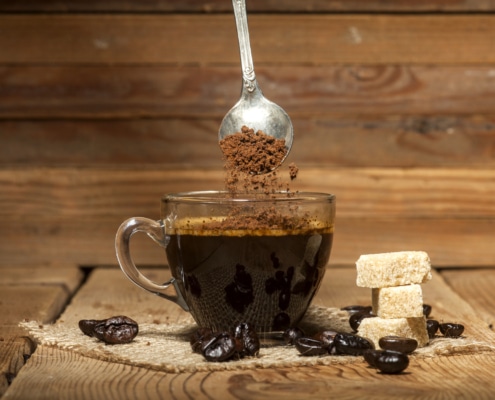 https://www.siamhillscoffee.com/wp-content/uploads/Instant-Coffee-and-Ground-Coffee-–-Which-is-Better-–-1.jpg
1250
2399
Siamhillscoffee
https://www.siamhillscoffee.com/wp-content/uploads/coffee-logo.png
Siamhillscoffee2021-02-12 07:27:432021-03-03 11:09:42Instant Coffee and Ground Coffee – Which is Better? –
https://www.siamhillscoffee.com/wp-content/uploads/Instant-Coffee-and-Ground-Coffee-–-Which-is-Better-–-1.jpg
1250
2399
Siamhillscoffee
https://www.siamhillscoffee.com/wp-content/uploads/coffee-logo.png
Siamhillscoffee2021-02-12 07:27:432021-03-03 11:09:42Instant Coffee and Ground Coffee – Which is Better? –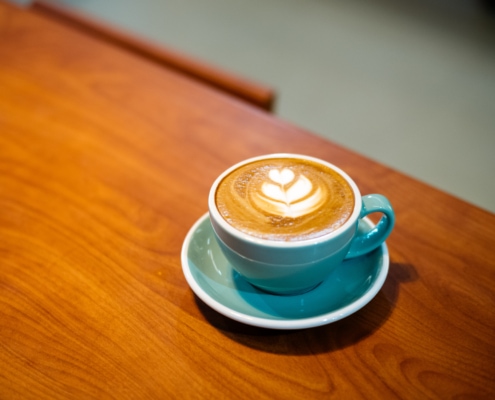 https://www.siamhillscoffee.com/wp-content/uploads/What-is-a-Flat-White-–-A-Complete-Guide-–-2.jpg
1414
2121
Siamhillscoffee
https://www.siamhillscoffee.com/wp-content/uploads/coffee-logo.png
Siamhillscoffee2021-02-12 07:21:312021-03-03 11:11:35What is a Flat White? – A Complete Guide –
https://www.siamhillscoffee.com/wp-content/uploads/What-is-a-Flat-White-–-A-Complete-Guide-–-2.jpg
1414
2121
Siamhillscoffee
https://www.siamhillscoffee.com/wp-content/uploads/coffee-logo.png
Siamhillscoffee2021-02-12 07:21:312021-03-03 11:11:35What is a Flat White? – A Complete Guide – https://www.siamhillscoffee.com/wp-content/uploads/Caffeine-Withdrawal-and-Headaches-–-7-Tips-for-Relief-and-More-–-1-scaled.jpg
1707
2560
Siamhillscoffee
https://www.siamhillscoffee.com/wp-content/uploads/coffee-logo.png
Siamhillscoffee2021-02-12 07:16:582021-03-03 11:12:51Caffeine Withdrawal and Headaches – 7 Tips for Relief and More –
https://www.siamhillscoffee.com/wp-content/uploads/Caffeine-Withdrawal-and-Headaches-–-7-Tips-for-Relief-and-More-–-1-scaled.jpg
1707
2560
Siamhillscoffee
https://www.siamhillscoffee.com/wp-content/uploads/coffee-logo.png
Siamhillscoffee2021-02-12 07:16:582021-03-03 11:12:51Caffeine Withdrawal and Headaches – 7 Tips for Relief and More – https://www.siamhillscoffee.com/wp-content/uploads/20-Best-Ground-Coffee-Recipes-9.jpg
896
640
Siamhillscoffee
https://www.siamhillscoffee.com/wp-content/uploads/coffee-logo.png
Siamhillscoffee2021-02-12 07:10:502021-03-03 11:14:2220 Best Ground Coffee Recipes – Make Delicious Food With Coffee –
https://www.siamhillscoffee.com/wp-content/uploads/20-Best-Ground-Coffee-Recipes-9.jpg
896
640
Siamhillscoffee
https://www.siamhillscoffee.com/wp-content/uploads/coffee-logo.png
Siamhillscoffee2021-02-12 07:10:502021-03-03 11:14:2220 Best Ground Coffee Recipes – Make Delicious Food With Coffee –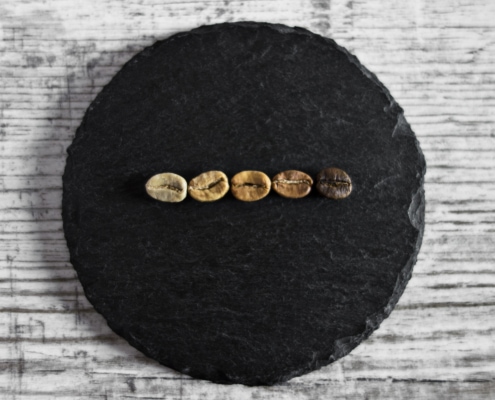 https://www.siamhillscoffee.com/wp-content/uploads/Coffee-Roast-Levels-1-scaled.jpg
1707
2560
Siamhillscoffee
https://www.siamhillscoffee.com/wp-content/uploads/coffee-logo.png
Siamhillscoffee2021-02-12 06:58:112021-03-03 11:44:54Coffee Roast Levels – The Differences Between Light, Medium and Dark Roasts –
https://www.siamhillscoffee.com/wp-content/uploads/Coffee-Roast-Levels-1-scaled.jpg
1707
2560
Siamhillscoffee
https://www.siamhillscoffee.com/wp-content/uploads/coffee-logo.png
Siamhillscoffee2021-02-12 06:58:112021-03-03 11:44:54Coffee Roast Levels – The Differences Between Light, Medium and Dark Roasts – https://www.siamhillscoffee.com/wp-content/uploads/15-Great-Coffee-Breakfast-Smoothies-–-Simply-Delicious-Ways-to-Boost-Your-Morning-–14.jpg
1050
700
Siamhillscoffee
https://www.siamhillscoffee.com/wp-content/uploads/coffee-logo.png
Siamhillscoffee2021-02-12 06:52:492021-03-03 11:46:4615 Great Coffee Breakfast Smoothies – Delicious Ways to Boost Your Morning –
https://www.siamhillscoffee.com/wp-content/uploads/15-Great-Coffee-Breakfast-Smoothies-–-Simply-Delicious-Ways-to-Boost-Your-Morning-–14.jpg
1050
700
Siamhillscoffee
https://www.siamhillscoffee.com/wp-content/uploads/coffee-logo.png
Siamhillscoffee2021-02-12 06:52:492021-03-03 11:46:4615 Great Coffee Breakfast Smoothies – Delicious Ways to Boost Your Morning –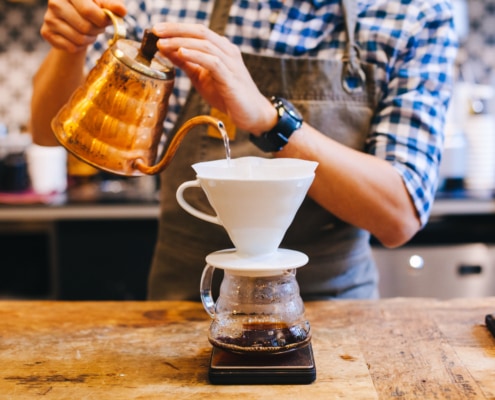 https://www.siamhillscoffee.com/wp-content/uploads/What-is-a-Filter-Coffee-–-A-Complete-Guide-–-1-scaled.jpg
1707
2560
Siamhillscoffee
https://www.siamhillscoffee.com/wp-content/uploads/coffee-logo.png
Siamhillscoffee2021-02-12 06:44:562021-03-03 11:48:24What is a Filter Coffee? – A Complete Guide –
https://www.siamhillscoffee.com/wp-content/uploads/What-is-a-Filter-Coffee-–-A-Complete-Guide-–-1-scaled.jpg
1707
2560
Siamhillscoffee
https://www.siamhillscoffee.com/wp-content/uploads/coffee-logo.png
Siamhillscoffee2021-02-12 06:44:562021-03-03 11:48:24What is a Filter Coffee? – A Complete Guide – https://www.siamhillscoffee.com/wp-content/uploads/Caffeine-Improves-Exercise-Performance-–-Does-Coffee-Make-Fit-–-1-scaled.jpg
1707
2560
Siamhillscoffee
https://www.siamhillscoffee.com/wp-content/uploads/coffee-logo.png
Siamhillscoffee2021-02-12 05:58:522021-03-03 11:49:58Caffeine Improves Exercise Performance – Does Coffee Make Fit? –
https://www.siamhillscoffee.com/wp-content/uploads/Caffeine-Improves-Exercise-Performance-–-Does-Coffee-Make-Fit-–-1-scaled.jpg
1707
2560
Siamhillscoffee
https://www.siamhillscoffee.com/wp-content/uploads/coffee-logo.png
Siamhillscoffee2021-02-12 05:58:522021-03-03 11:49:58Caffeine Improves Exercise Performance – Does Coffee Make Fit? –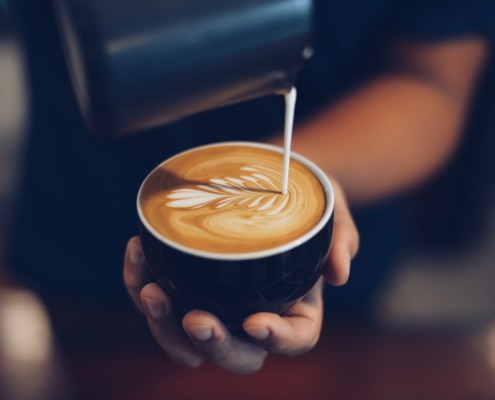 https://www.siamhillscoffee.com/wp-content/uploads/What-is-a-Cappuccino-–-A-Complete-Guide-–-1-scaled.jpg
1704
2560
Siamhillscoffee
https://www.siamhillscoffee.com/wp-content/uploads/coffee-logo.png
Siamhillscoffee2021-02-12 05:52:502021-03-03 11:51:41What is a Cappuccino? – A Complete Guide –
https://www.siamhillscoffee.com/wp-content/uploads/What-is-a-Cappuccino-–-A-Complete-Guide-–-1-scaled.jpg
1704
2560
Siamhillscoffee
https://www.siamhillscoffee.com/wp-content/uploads/coffee-logo.png
Siamhillscoffee2021-02-12 05:52:502021-03-03 11:51:41What is a Cappuccino? – A Complete Guide –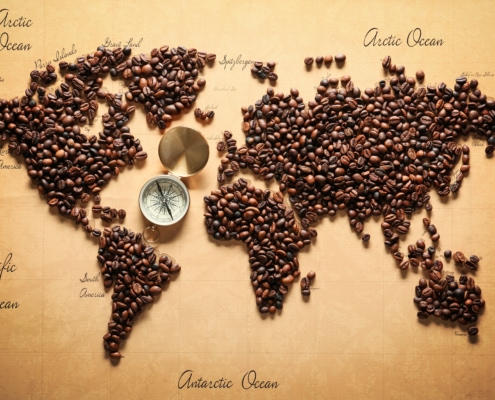 https://www.siamhillscoffee.com/wp-content/uploads/History-of-Coffee-1-scaled.jpg
1707
2560
Siamhillscoffee
https://www.siamhillscoffee.com/wp-content/uploads/coffee-logo.png
Siamhillscoffee2021-02-12 05:47:432021-03-03 11:53:23History of Coffee – Where it Comes From and Conquered the World –
https://www.siamhillscoffee.com/wp-content/uploads/History-of-Coffee-1-scaled.jpg
1707
2560
Siamhillscoffee
https://www.siamhillscoffee.com/wp-content/uploads/coffee-logo.png
Siamhillscoffee2021-02-12 05:47:432021-03-03 11:53:23History of Coffee – Where it Comes From and Conquered the World – https://www.siamhillscoffee.com/wp-content/uploads/Is-Coffee-Addictive-–-A-Critical-Look-at-Coffee-and-Caffeine-–-1-scaled.jpg
1707
2560
Siamhillscoffee
https://www.siamhillscoffee.com/wp-content/uploads/coffee-logo.png
Siamhillscoffee2021-02-12 05:38:012021-03-03 11:55:00Is Coffee Addictive? – A Critical Look at Coffee and Caffeine –
https://www.siamhillscoffee.com/wp-content/uploads/Is-Coffee-Addictive-–-A-Critical-Look-at-Coffee-and-Caffeine-–-1-scaled.jpg
1707
2560
Siamhillscoffee
https://www.siamhillscoffee.com/wp-content/uploads/coffee-logo.png
Siamhillscoffee2021-02-12 05:38:012021-03-03 11:55:00Is Coffee Addictive? – A Critical Look at Coffee and Caffeine –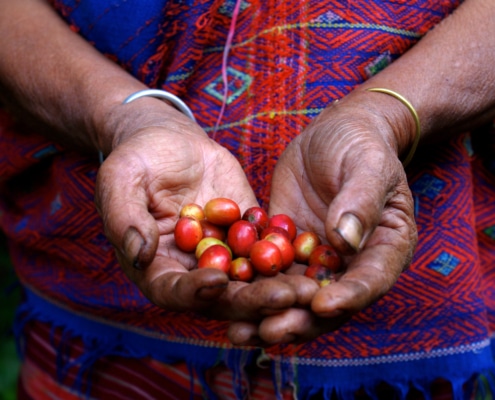 https://www.siamhillscoffee.com/wp-content/uploads/Fair-Trade-Coffee-–-What-Does-it-Really-Mean-1-scaled.jpg
1714
2560
Siamhillscoffee
https://www.siamhillscoffee.com/wp-content/uploads/coffee-logo.png
Siamhillscoffee2021-02-12 05:30:322021-03-03 11:57:01Fair Trade Coffee – What Does it Really Mean? –
https://www.siamhillscoffee.com/wp-content/uploads/Fair-Trade-Coffee-–-What-Does-it-Really-Mean-1-scaled.jpg
1714
2560
Siamhillscoffee
https://www.siamhillscoffee.com/wp-content/uploads/coffee-logo.png
Siamhillscoffee2021-02-12 05:30:322021-03-03 11:57:01Fair Trade Coffee – What Does it Really Mean? – https://www.siamhillscoffee.com/wp-content/uploads/What-is-an-Affogato-–-A-Complete-Guide-–-1-scaled.jpg
1700
2560
Siamhillscoffee
https://www.siamhillscoffee.com/wp-content/uploads/coffee-logo.png
Siamhillscoffee2021-02-12 05:24:302021-03-03 11:58:41What is an Affogato? – A Complete Guide –
https://www.siamhillscoffee.com/wp-content/uploads/What-is-an-Affogato-–-A-Complete-Guide-–-1-scaled.jpg
1700
2560
Siamhillscoffee
https://www.siamhillscoffee.com/wp-content/uploads/coffee-logo.png
Siamhillscoffee2021-02-12 05:24:302021-03-03 11:58:41What is an Affogato? – A Complete Guide –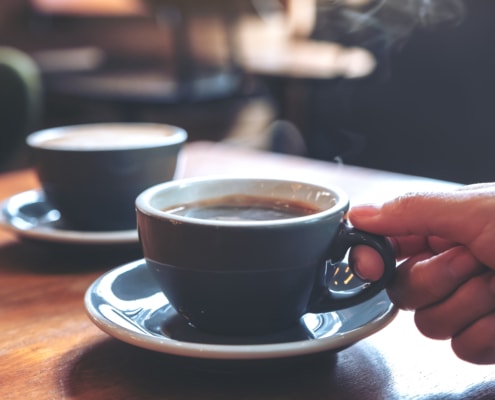 https://www.siamhillscoffee.com/wp-content/uploads/What-is-an-Americano-–-A-Complete-Guide-–-1-scaled.jpg
1707
2560
Siamhillscoffee
https://www.siamhillscoffee.com/wp-content/uploads/coffee-logo.png
Siamhillscoffee2021-02-12 05:20:142021-03-03 12:00:35What is an Americano – A Complete Guide –
https://www.siamhillscoffee.com/wp-content/uploads/What-is-an-Americano-–-A-Complete-Guide-–-1-scaled.jpg
1707
2560
Siamhillscoffee
https://www.siamhillscoffee.com/wp-content/uploads/coffee-logo.png
Siamhillscoffee2021-02-12 05:20:142021-03-03 12:00:35What is an Americano – A Complete Guide –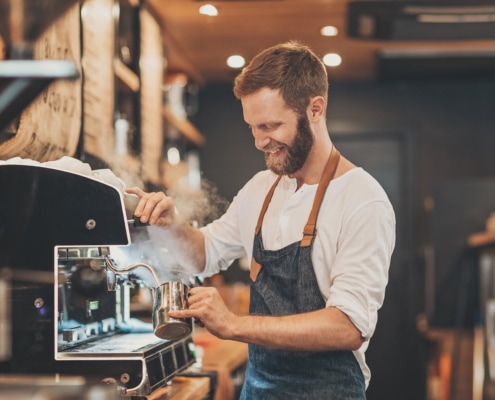 https://www.siamhillscoffee.com/wp-content/uploads/What-is-a-Barista-–-How-to-Professionally-Make-Coffee-–-1-scaled.jpg
1707
2560
Siamhillscoffee
https://www.siamhillscoffee.com/wp-content/uploads/coffee-logo.png
Siamhillscoffee2021-02-12 05:15:182021-03-03 12:02:08What is a Barista? – How to Professionally Make Coffee –
https://www.siamhillscoffee.com/wp-content/uploads/What-is-a-Barista-–-How-to-Professionally-Make-Coffee-–-1-scaled.jpg
1707
2560
Siamhillscoffee
https://www.siamhillscoffee.com/wp-content/uploads/coffee-logo.png
Siamhillscoffee2021-02-12 05:15:182021-03-03 12:02:08What is a Barista? – How to Professionally Make Coffee – https://www.siamhillscoffee.com/wp-content/uploads/Caffeine-and-Migraines-–-Does-Caffeine-Trigger-or-Treat-Migraines-–-2-scaled.jpg
1707
2560
Siamhillscoffee
https://www.siamhillscoffee.com/wp-content/uploads/coffee-logo.png
Siamhillscoffee2021-02-12 05:06:562021-03-03 12:03:40Caffeine and Migraines – Does Caffeine Trigger or Treat Migraines –
https://www.siamhillscoffee.com/wp-content/uploads/Caffeine-and-Migraines-–-Does-Caffeine-Trigger-or-Treat-Migraines-–-2-scaled.jpg
1707
2560
Siamhillscoffee
https://www.siamhillscoffee.com/wp-content/uploads/coffee-logo.png
Siamhillscoffee2021-02-12 05:06:562021-03-03 12:03:40Caffeine and Migraines – Does Caffeine Trigger or Treat Migraines – https://www.siamhillscoffee.com/wp-content/uploads/15-Best-Iced-Coffee-Recipes-–-Your-Perfectly-Refreshing-Boost-and-Buzz-–-5-scaled.jpg
1440
2560
Siamhillscoffee
https://www.siamhillscoffee.com/wp-content/uploads/coffee-logo.png
Siamhillscoffee2021-02-12 05:00:102021-03-03 12:05:3015 Best Iced Coffee Recipes – Your Perfectly Refreshing Boost and Buzz –
https://www.siamhillscoffee.com/wp-content/uploads/15-Best-Iced-Coffee-Recipes-–-Your-Perfectly-Refreshing-Boost-and-Buzz-–-5-scaled.jpg
1440
2560
Siamhillscoffee
https://www.siamhillscoffee.com/wp-content/uploads/coffee-logo.png
Siamhillscoffee2021-02-12 05:00:102021-03-03 12:05:3015 Best Iced Coffee Recipes – Your Perfectly Refreshing Boost and Buzz –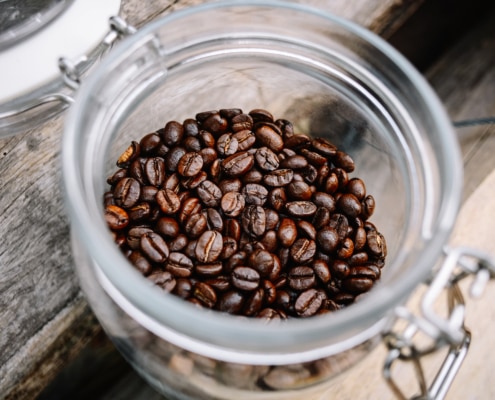 https://www.siamhillscoffee.com/wp-content/uploads/What-is-Robusta-Coffee-–Top-10-Robusta-vs.-Arabica-Differences-–-1-scaled.jpg
1696
2560
Siamhillscoffee
https://www.siamhillscoffee.com/wp-content/uploads/coffee-logo.png
Siamhillscoffee2021-02-12 04:50:162021-03-03 12:07:04What is Robusta Coffee? –Top 10 Robusta vs. Arabica Differences –
https://www.siamhillscoffee.com/wp-content/uploads/What-is-Robusta-Coffee-–Top-10-Robusta-vs.-Arabica-Differences-–-1-scaled.jpg
1696
2560
Siamhillscoffee
https://www.siamhillscoffee.com/wp-content/uploads/coffee-logo.png
Siamhillscoffee2021-02-12 04:50:162021-03-03 12:07:04What is Robusta Coffee? –Top 10 Robusta vs. Arabica Differences – https://www.siamhillscoffee.com/wp-content/uploads/Caffeine-And-Your-Body-Everything-to-Know-About-Caffeine-Effects-–-2-scaled.jpg
1707
2560
Siamhillscoffee
https://www.siamhillscoffee.com/wp-content/uploads/coffee-logo.png
Siamhillscoffee2021-02-12 04:44:592021-03-03 12:09:01Caffeine And Your Body – Everything to Know About Caffeine Effects –
https://www.siamhillscoffee.com/wp-content/uploads/Caffeine-And-Your-Body-Everything-to-Know-About-Caffeine-Effects-–-2-scaled.jpg
1707
2560
Siamhillscoffee
https://www.siamhillscoffee.com/wp-content/uploads/coffee-logo.png
Siamhillscoffee2021-02-12 04:44:592021-03-03 12:09:01Caffeine And Your Body – Everything to Know About Caffeine Effects – https://www.siamhillscoffee.com/wp-content/uploads/How-To-Open-A-Coffee-Shop-The-10-Most-Important-Steps-1-scaled.jpg
1708
2560
Siamhillscoffee
https://www.siamhillscoffee.com/wp-content/uploads/coffee-logo.png
Siamhillscoffee2021-02-12 04:37:232021-03-03 12:10:33How To Open A Coffee Shop – The 10 Most Important Steps
https://www.siamhillscoffee.com/wp-content/uploads/How-To-Open-A-Coffee-Shop-The-10-Most-Important-Steps-1-scaled.jpg
1708
2560
Siamhillscoffee
https://www.siamhillscoffee.com/wp-content/uploads/coffee-logo.png
Siamhillscoffee2021-02-12 04:37:232021-03-03 12:10:33How To Open A Coffee Shop – The 10 Most Important Steps https://www.siamhillscoffee.com/wp-content/uploads/How-To-Sell-Coffee-Online-–-Open-Your-Own-Online-Coffee-Shop-1-scaled.jpg
1697
2560
Siamhillscoffee
https://www.siamhillscoffee.com/wp-content/uploads/coffee-logo.png
Siamhillscoffee2021-02-12 04:32:292021-03-03 12:12:06How To Sell Coffee Online – Open Your Own Online Coffee Shop
https://www.siamhillscoffee.com/wp-content/uploads/How-To-Sell-Coffee-Online-–-Open-Your-Own-Online-Coffee-Shop-1-scaled.jpg
1697
2560
Siamhillscoffee
https://www.siamhillscoffee.com/wp-content/uploads/coffee-logo.png
Siamhillscoffee2021-02-12 04:32:292021-03-03 12:12:06How To Sell Coffee Online – Open Your Own Online Coffee Shop https://www.siamhillscoffee.com/wp-content/uploads/Caffeine-and-Depression-Does-Caffeine-Help-with-Depression-–-1-scaled.jpg
1707
2560
Siamhillscoffee
https://www.siamhillscoffee.com/wp-content/uploads/coffee-logo.png
Siamhillscoffee2021-02-12 04:23:222021-03-03 12:13:42Caffeine and Depression – Does Caffeine Help with Depression? –
https://www.siamhillscoffee.com/wp-content/uploads/Caffeine-and-Depression-Does-Caffeine-Help-with-Depression-–-1-scaled.jpg
1707
2560
Siamhillscoffee
https://www.siamhillscoffee.com/wp-content/uploads/coffee-logo.png
Siamhillscoffee2021-02-12 04:23:222021-03-03 12:13:42Caffeine and Depression – Does Caffeine Help with Depression? –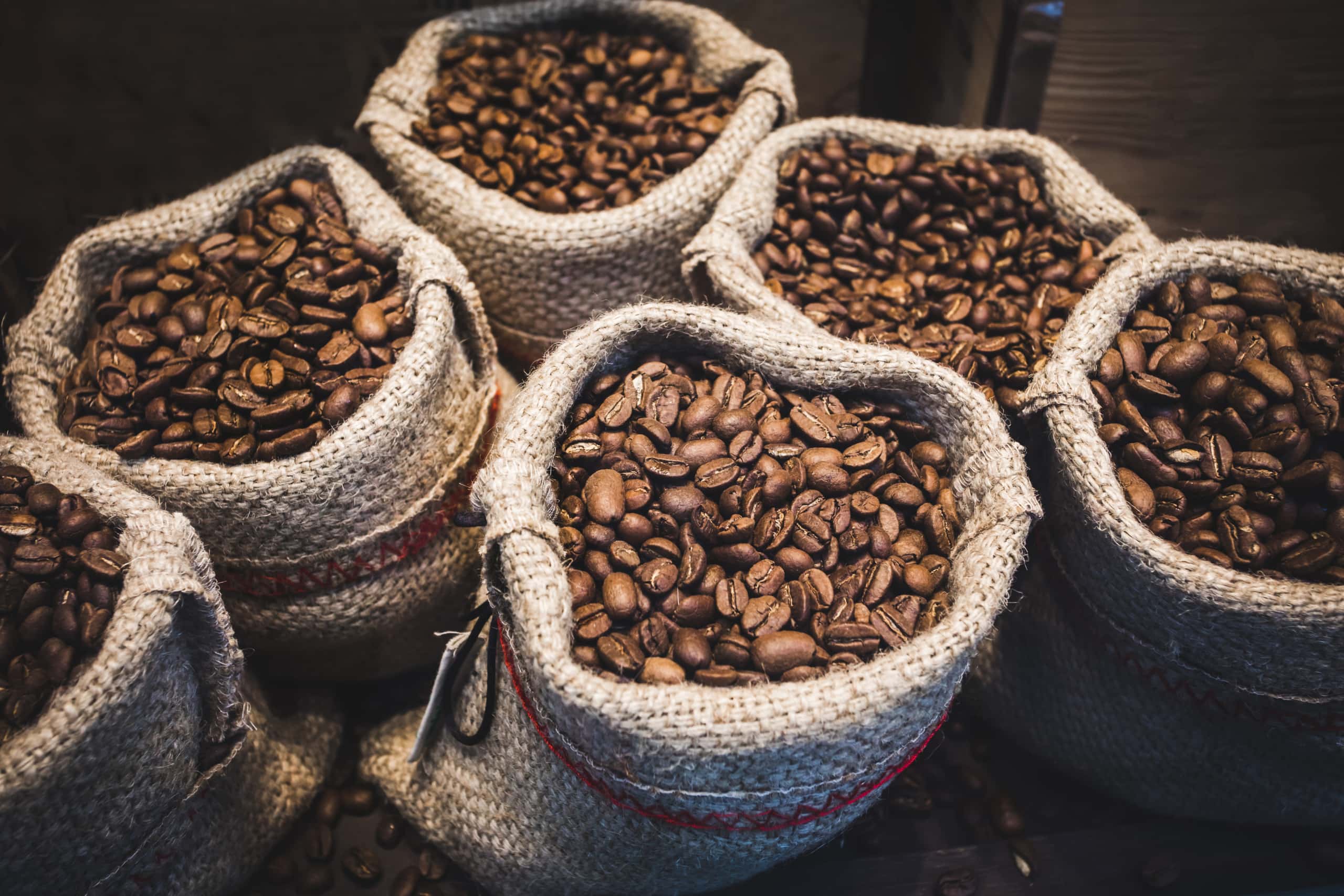 https://www.siamhillscoffee.com/wp-content/uploads/Arabica-and-Robusta-Coffee-–Top-10-Arabica-vs.-Robusta-Differences-–-1-scaled.jpg
1707
2560
Siamhillscoffee
https://www.siamhillscoffee.com/wp-content/uploads/coffee-logo.png
Siamhillscoffee2021-02-12 04:00:402021-03-03 12:21:42Arabica and Robusta Coffee –Top 10 Arabica vs. Robusta Differences –
https://www.siamhillscoffee.com/wp-content/uploads/Arabica-and-Robusta-Coffee-–Top-10-Arabica-vs.-Robusta-Differences-–-1-scaled.jpg
1707
2560
Siamhillscoffee
https://www.siamhillscoffee.com/wp-content/uploads/coffee-logo.png
Siamhillscoffee2021-02-12 04:00:402021-03-03 12:21:42Arabica and Robusta Coffee –Top 10 Arabica vs. Robusta Differences – https://www.siamhillscoffee.com/wp-content/uploads/Coffee-and-Caffeine-–-How-Much-Caffeine-is-Okay-for-You-–-1-scaled.jpg
1709
2560
Siamhillscoffee
https://www.siamhillscoffee.com/wp-content/uploads/coffee-logo.png
Siamhillscoffee2021-02-12 03:54:492021-03-03 12:25:58Coffee and Caffeine – How Much Caffeine is Okay for You? –
https://www.siamhillscoffee.com/wp-content/uploads/Coffee-and-Caffeine-–-How-Much-Caffeine-is-Okay-for-You-–-1-scaled.jpg
1709
2560
Siamhillscoffee
https://www.siamhillscoffee.com/wp-content/uploads/coffee-logo.png
Siamhillscoffee2021-02-12 03:54:492021-03-03 12:25:58Coffee and Caffeine – How Much Caffeine is Okay for You? – https://www.siamhillscoffee.com/wp-content/uploads/Make-Your-Coffee-Better-–-6-Fun-Ways-to-Boost-Your-Coffee-–-1-scaled.jpg
1709
2560
Siamhillscoffee
https://www.siamhillscoffee.com/wp-content/uploads/coffee-logo.png
Siamhillscoffee2021-02-12 03:45:112021-03-03 12:29:07Make Your Coffee Better – 6 Fun Ways to Boost Your Coffee –
https://www.siamhillscoffee.com/wp-content/uploads/Make-Your-Coffee-Better-–-6-Fun-Ways-to-Boost-Your-Coffee-–-1-scaled.jpg
1709
2560
Siamhillscoffee
https://www.siamhillscoffee.com/wp-content/uploads/coffee-logo.png
Siamhillscoffee2021-02-12 03:45:112021-03-03 12:29:07Make Your Coffee Better – 6 Fun Ways to Boost Your Coffee –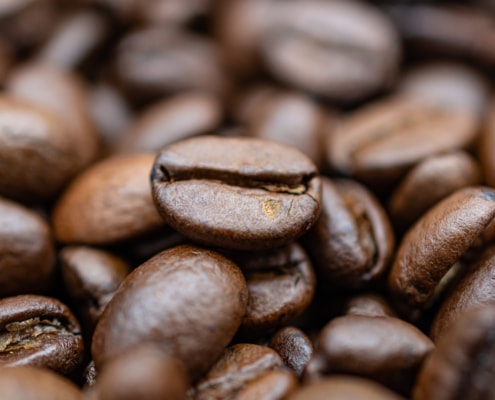 https://www.siamhillscoffee.com/wp-content/uploads/What-is-Arabica-Coffee-–Top-10-Arabica-vs.-Robusta-Differences-–-1-scaled.jpg
1820
2560
Siamhillscoffee
https://www.siamhillscoffee.com/wp-content/uploads/coffee-logo.png
Siamhillscoffee2021-02-12 03:36:062021-03-03 12:30:45What is Arabica Coffee? –Top 10 Arabica vs. Robusta Differences –
https://www.siamhillscoffee.com/wp-content/uploads/What-is-Arabica-Coffee-–Top-10-Arabica-vs.-Robusta-Differences-–-1-scaled.jpg
1820
2560
Siamhillscoffee
https://www.siamhillscoffee.com/wp-content/uploads/coffee-logo.png
Siamhillscoffee2021-02-12 03:36:062021-03-03 12:30:45What is Arabica Coffee? –Top 10 Arabica vs. Robusta Differences – https://www.siamhillscoffee.com/wp-content/uploads/Top-10-Best-Coffee-Drinks-in-the-World-Most-Consumed-Worldwide-–-1.jpg
1414
2121
Siamhillscoffee
https://www.siamhillscoffee.com/wp-content/uploads/coffee-logo.png
Siamhillscoffee2021-02-12 03:22:582021-03-03 12:33:14Top 10 Best Coffee Drinks in the World – Most Consumed Worldwide –
https://www.siamhillscoffee.com/wp-content/uploads/Top-10-Best-Coffee-Drinks-in-the-World-Most-Consumed-Worldwide-–-1.jpg
1414
2121
Siamhillscoffee
https://www.siamhillscoffee.com/wp-content/uploads/coffee-logo.png
Siamhillscoffee2021-02-12 03:22:582021-03-03 12:33:14Top 10 Best Coffee Drinks in the World – Most Consumed Worldwide –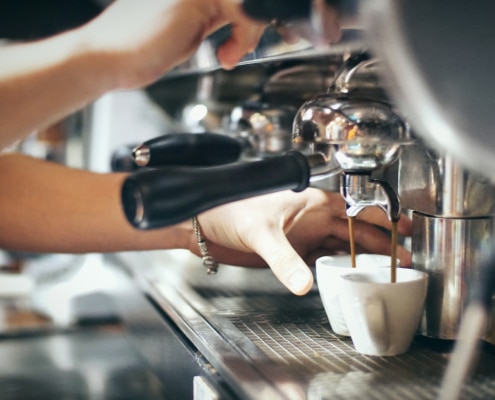 https://www.siamhillscoffee.com/wp-content/uploads/Top-10-Most-Popular-Espresso-Drinks-A-Complete-Overview-–-1.jpg
1392
2154
Siamhillscoffee
https://www.siamhillscoffee.com/wp-content/uploads/coffee-logo.png
Siamhillscoffee2021-02-12 03:15:472021-03-03 12:35:06Top 10 Most Popular Espresso Drinks – A Complete Overview –
https://www.siamhillscoffee.com/wp-content/uploads/Top-10-Most-Popular-Espresso-Drinks-A-Complete-Overview-–-1.jpg
1392
2154
Siamhillscoffee
https://www.siamhillscoffee.com/wp-content/uploads/coffee-logo.png
Siamhillscoffee2021-02-12 03:15:472021-03-03 12:35:06Top 10 Most Popular Espresso Drinks – A Complete Overview – https://www.siamhillscoffee.com/wp-content/uploads/Eating-Coffee-Beans-–-Yummy-Healthy-or-Stupid-–-1.jpg
1414
2121
Siamhillscoffee
https://www.siamhillscoffee.com/wp-content/uploads/coffee-logo.png
Siamhillscoffee2021-02-12 03:04:352021-03-03 12:37:32Eating Coffee Beans – Yummy, Healthy or Stupid –
https://www.siamhillscoffee.com/wp-content/uploads/Eating-Coffee-Beans-–-Yummy-Healthy-or-Stupid-–-1.jpg
1414
2121
Siamhillscoffee
https://www.siamhillscoffee.com/wp-content/uploads/coffee-logo.png
Siamhillscoffee2021-02-12 03:04:352021-03-03 12:37:32Eating Coffee Beans – Yummy, Healthy or Stupid – https://www.siamhillscoffee.com/wp-content/uploads/Caffeine-Side-Effects-–-10-Side-Effects-of-Too-Much-Caffeine-–-1.jpg
1414
2119
Siamhillscoffee
https://www.siamhillscoffee.com/wp-content/uploads/coffee-logo.png
Siamhillscoffee2021-02-12 02:58:352021-03-03 12:39:16Caffeine Side Effects – 10 Side Effects of Too Much Caffeine –
https://www.siamhillscoffee.com/wp-content/uploads/Caffeine-Side-Effects-–-10-Side-Effects-of-Too-Much-Caffeine-–-1.jpg
1414
2119
Siamhillscoffee
https://www.siamhillscoffee.com/wp-content/uploads/coffee-logo.png
Siamhillscoffee2021-02-12 02:58:352021-03-03 12:39:16Caffeine Side Effects – 10 Side Effects of Too Much Caffeine – https://www.siamhillscoffee.com/wp-content/uploads/20-Best-Barista-Coffee-Recipes-–-Your-Perfectly-Delicious-Coffee-Treat-–-9-scaled.jpg
1707
2560
Siamhillscoffee
https://www.siamhillscoffee.com/wp-content/uploads/coffee-logo.png
Siamhillscoffee2021-02-12 02:51:302021-02-20 14:07:0420 Best Barista Coffee Recipes – Your Perfectly Delicious Coffee Treat –
https://www.siamhillscoffee.com/wp-content/uploads/20-Best-Barista-Coffee-Recipes-–-Your-Perfectly-Delicious-Coffee-Treat-–-9-scaled.jpg
1707
2560
Siamhillscoffee
https://www.siamhillscoffee.com/wp-content/uploads/coffee-logo.png
Siamhillscoffee2021-02-12 02:51:302021-02-20 14:07:0420 Best Barista Coffee Recipes – Your Perfectly Delicious Coffee Treat – https://www.siamhillscoffee.com/wp-content/uploads/A-Coffee-Journey-–-10-Steps-From-the-Seed-to-Your-Cup-–-1-scaled.jpg
1700
2560
Siamhillscoffee
https://www.siamhillscoffee.com/wp-content/uploads/coffee-logo.png
Siamhillscoffee2021-02-12 02:31:102021-02-20 14:09:30A Coffee Journey – 10 Steps From the Seed to Your Cup –
https://www.siamhillscoffee.com/wp-content/uploads/A-Coffee-Journey-–-10-Steps-From-the-Seed-to-Your-Cup-–-1-scaled.jpg
1700
2560
Siamhillscoffee
https://www.siamhillscoffee.com/wp-content/uploads/coffee-logo.png
Siamhillscoffee2021-02-12 02:31:102021-02-20 14:09:30A Coffee Journey – 10 Steps From the Seed to Your Cup –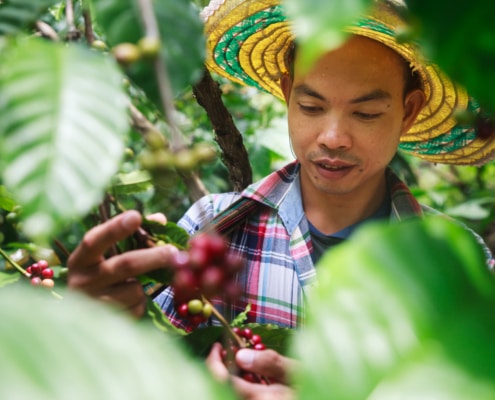 https://www.siamhillscoffee.com/wp-content/uploads/What-is-Shade-Grown-Coffee-–-Does-it-Make-our-Coffee-Taste-Better-–-1-scaled.jpg
1707
2560
Siamhillscoffee
https://www.siamhillscoffee.com/wp-content/uploads/coffee-logo.png
Siamhillscoffee2021-02-12 02:15:222021-03-03 13:36:34What is Shade-Grown Coffee? – Does it Make our Coffee Taste Better? –
https://www.siamhillscoffee.com/wp-content/uploads/What-is-Shade-Grown-Coffee-–-Does-it-Make-our-Coffee-Taste-Better-–-1-scaled.jpg
1707
2560
Siamhillscoffee
https://www.siamhillscoffee.com/wp-content/uploads/coffee-logo.png
Siamhillscoffee2021-02-12 02:15:222021-03-03 13:36:34What is Shade-Grown Coffee? – Does it Make our Coffee Taste Better? – https://www.siamhillscoffee.com/wp-content/uploads/Coffee-Diet-–-Can-You-Really-Lose-Weight-With-Coffee-–-1-2-scaled.jpg
1708
2560
Siamhillscoffee
https://www.siamhillscoffee.com/wp-content/uploads/coffee-logo.png
Siamhillscoffee2021-02-12 02:07:232021-03-03 13:38:57Coffee Diet – Can You Really Lose Weight With Coffee? –
https://www.siamhillscoffee.com/wp-content/uploads/Coffee-Diet-–-Can-You-Really-Lose-Weight-With-Coffee-–-1-2-scaled.jpg
1708
2560
Siamhillscoffee
https://www.siamhillscoffee.com/wp-content/uploads/coffee-logo.png
Siamhillscoffee2021-02-12 02:07:232021-03-03 13:38:57Coffee Diet – Can You Really Lose Weight With Coffee? – https://www.siamhillscoffee.com/wp-content/uploads/The-Coffee-Bean-–-Its-Anatomy-and-Everything-You-Need-to-Know-–-8-scaled.jpg
1518
2560
Siamhillscoffee
https://www.siamhillscoffee.com/wp-content/uploads/coffee-logo.png
Siamhillscoffee2021-02-11 04:45:162021-03-03 13:41:52The Coffee Bean – Its Anatomy and Everything You Need to Know –
https://www.siamhillscoffee.com/wp-content/uploads/The-Coffee-Bean-–-Its-Anatomy-and-Everything-You-Need-to-Know-–-8-scaled.jpg
1518
2560
Siamhillscoffee
https://www.siamhillscoffee.com/wp-content/uploads/coffee-logo.png
Siamhillscoffee2021-02-11 04:45:162021-03-03 13:41:52The Coffee Bean – Its Anatomy and Everything You Need to Know –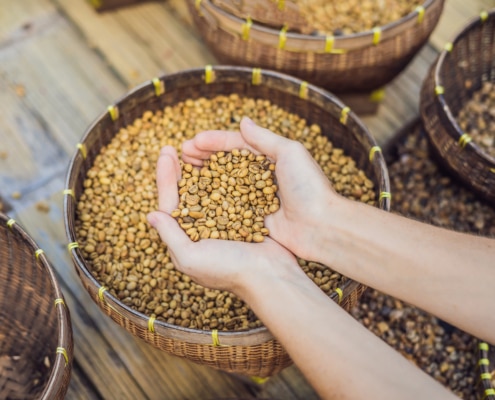 https://www.siamhillscoffee.com/wp-content/uploads/Kopi_Luwak_Coffee_The_Most_Expensive_Coffee_An_Honest_Opinion-4.jpg
1414
2121
Siamhillscoffee
https://www.siamhillscoffee.com/wp-content/uploads/coffee-logo.png
Siamhillscoffee2020-03-08 13:43:142021-03-03 13:34:22Kopi Luwak Coffee – The Most Expensive Coffee – An Honest Opinion
https://www.siamhillscoffee.com/wp-content/uploads/Kopi_Luwak_Coffee_The_Most_Expensive_Coffee_An_Honest_Opinion-4.jpg
1414
2121
Siamhillscoffee
https://www.siamhillscoffee.com/wp-content/uploads/coffee-logo.png
Siamhillscoffee2020-03-08 13:43:142021-03-03 13:34:22Kopi Luwak Coffee – The Most Expensive Coffee – An Honest Opinion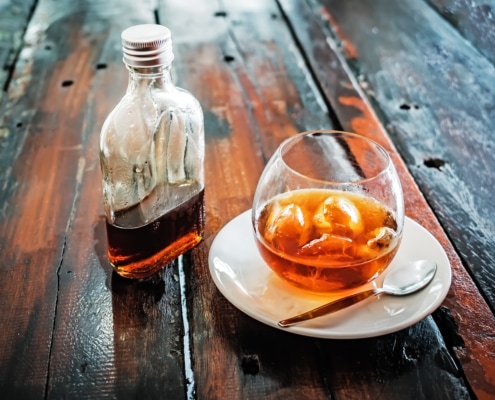 https://www.siamhillscoffee.com/wp-content/uploads/Cold_Brew_Coffee_An_Honest_Opinion_All_You_Need_To_Know_1.jpg
3144
4608
Siamhillscoffee
https://www.siamhillscoffee.com/wp-content/uploads/coffee-logo.png
Siamhillscoffee2019-11-06 05:01:152021-03-03 13:30:17Cold Brew Coffee – An Honest Opinion – All You Need to Know
https://www.siamhillscoffee.com/wp-content/uploads/Cold_Brew_Coffee_An_Honest_Opinion_All_You_Need_To_Know_1.jpg
3144
4608
Siamhillscoffee
https://www.siamhillscoffee.com/wp-content/uploads/coffee-logo.png
Siamhillscoffee2019-11-06 05:01:152021-03-03 13:30:17Cold Brew Coffee – An Honest Opinion – All You Need to Know https://www.siamhillscoffee.com/wp-content/uploads/10_reasons_to_drink_coffee_every_day.jpg
1414
2121
Siamhillscoffee
https://www.siamhillscoffee.com/wp-content/uploads/coffee-logo.png
Siamhillscoffee2019-11-05 07:26:292021-03-03 13:31:5310 Reasons to Drink Coffee Every Day
https://www.siamhillscoffee.com/wp-content/uploads/10_reasons_to_drink_coffee_every_day.jpg
1414
2121
Siamhillscoffee
https://www.siamhillscoffee.com/wp-content/uploads/coffee-logo.png
Siamhillscoffee2019-11-05 07:26:292021-03-03 13:31:5310 Reasons to Drink Coffee Every Day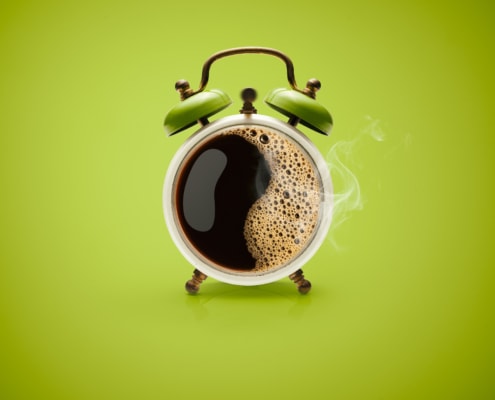 https://www.siamhillscoffee.com/wp-content/uploads/Do-Coffee-Drinkers-Live-Longer-Siam-Hills-Coffee-Blog.jpg
3141
3170
Siamhillscoffee
https://www.siamhillscoffee.com/wp-content/uploads/coffee-logo.png
Siamhillscoffee2019-05-20 04:45:512021-03-03 12:42:18Do Coffee Drinkers Live Longer?
https://www.siamhillscoffee.com/wp-content/uploads/Do-Coffee-Drinkers-Live-Longer-Siam-Hills-Coffee-Blog.jpg
3141
3170
Siamhillscoffee
https://www.siamhillscoffee.com/wp-content/uploads/coffee-logo.png
Siamhillscoffee2019-05-20 04:45:512021-03-03 12:42:18Do Coffee Drinkers Live Longer? https://www.siamhillscoffee.com/wp-content/uploads/Enjoy-Fresh-Coffee-Siam-Hills-Coffee-2.jpg
3956
5931
Siamhillscoffee
https://www.siamhillscoffee.com/wp-content/uploads/coffee-logo.png
Siamhillscoffee2019-01-12 10:21:362021-03-03 12:40:35From Our Farms To Your Cup – A Coffee Journey
https://www.siamhillscoffee.com/wp-content/uploads/Enjoy-Fresh-Coffee-Siam-Hills-Coffee-2.jpg
3956
5931
Siamhillscoffee
https://www.siamhillscoffee.com/wp-content/uploads/coffee-logo.png
Siamhillscoffee2019-01-12 10:21:362021-03-03 12:40:35From Our Farms To Your Cup – A Coffee Journey
